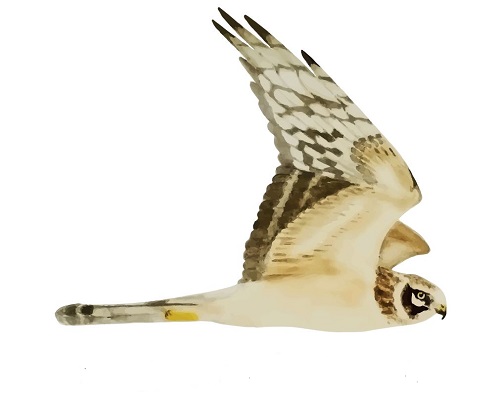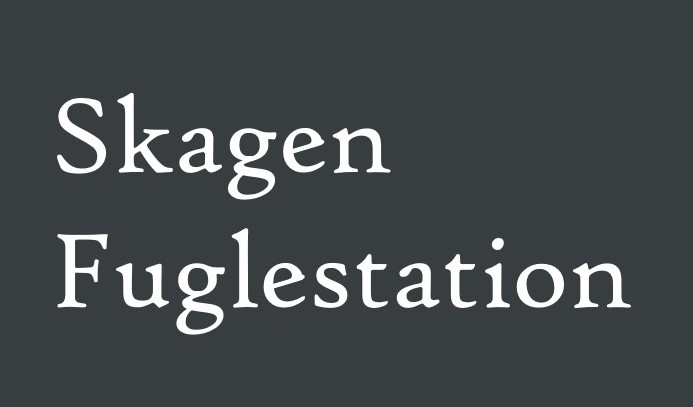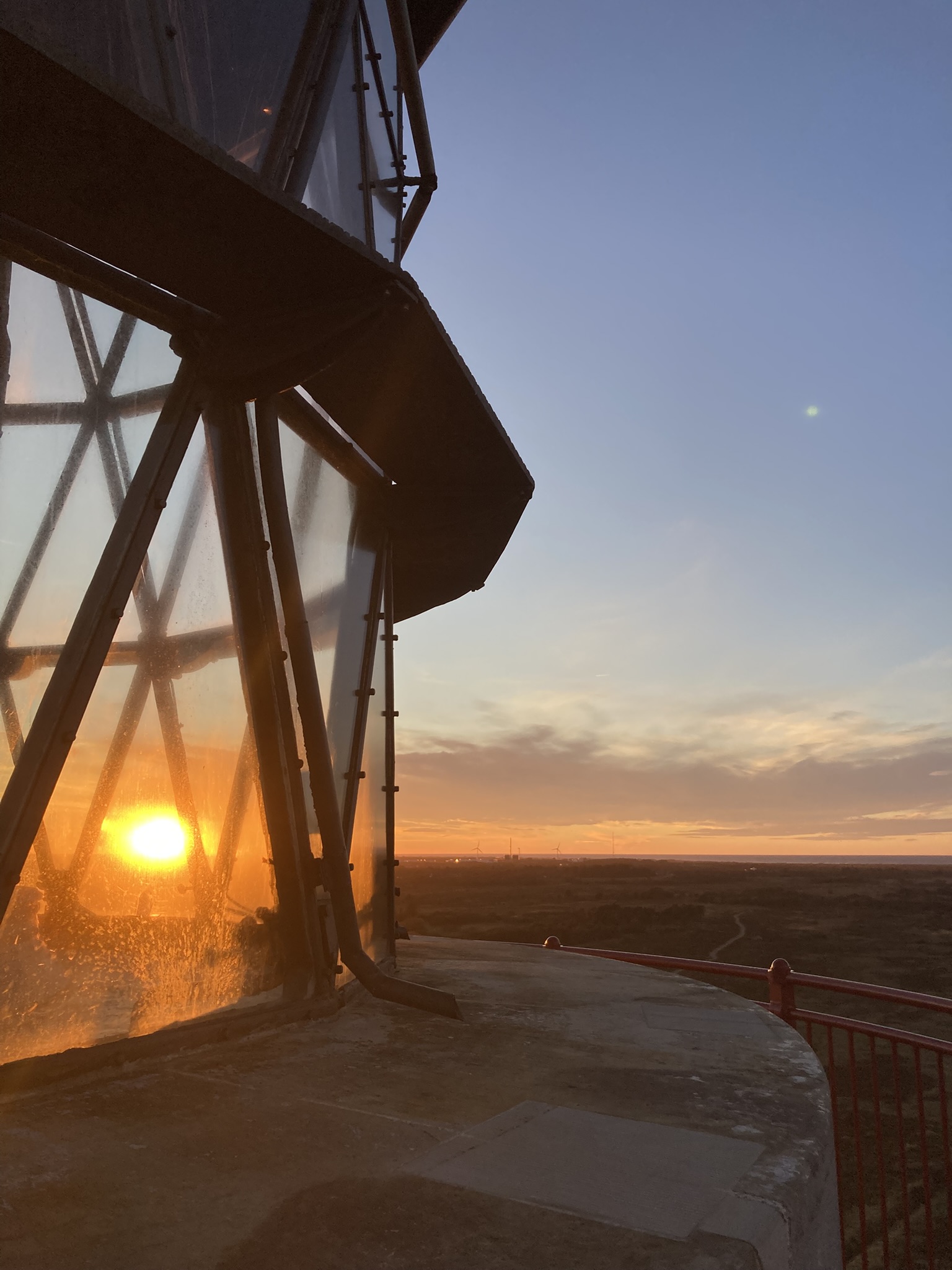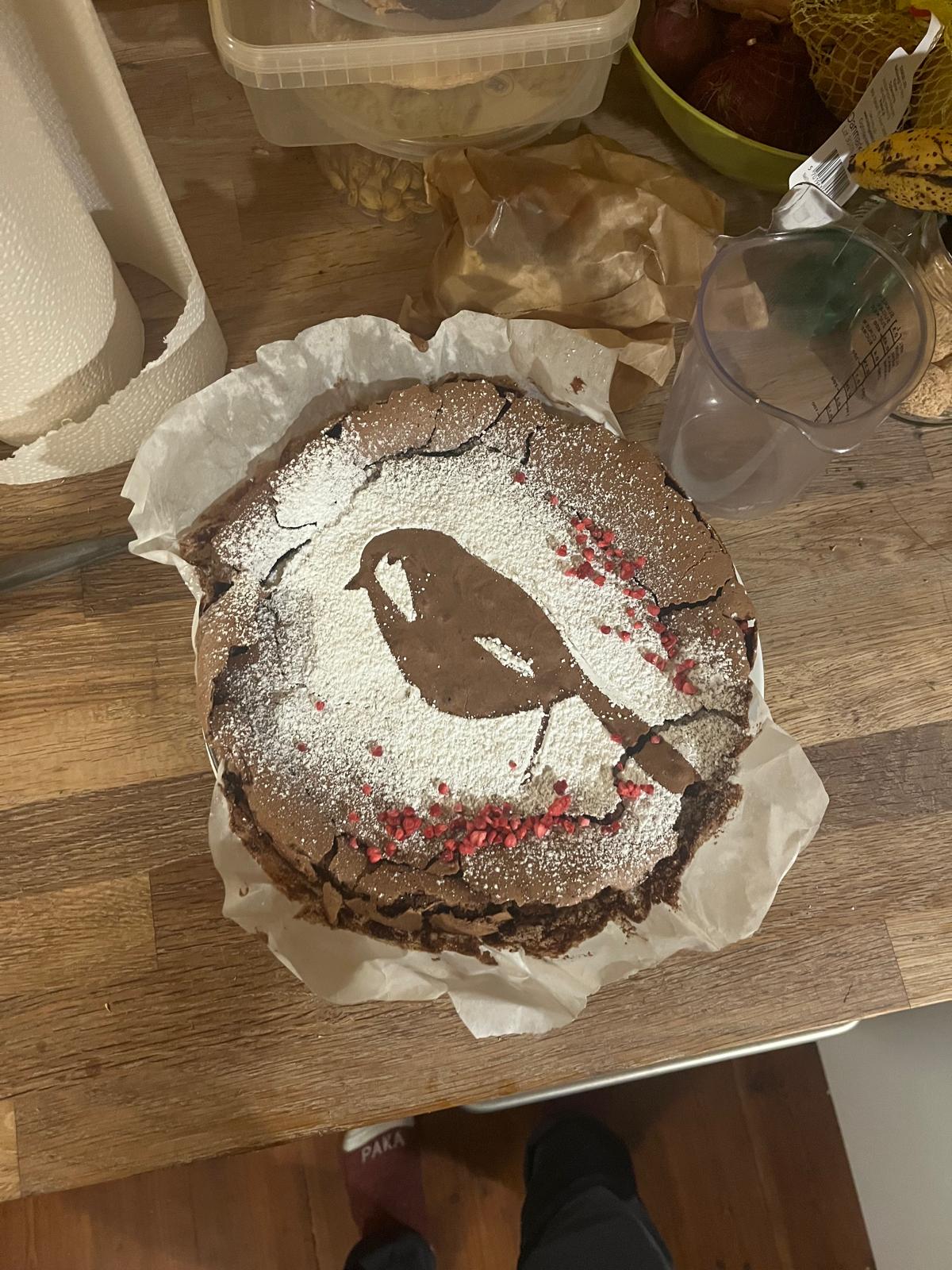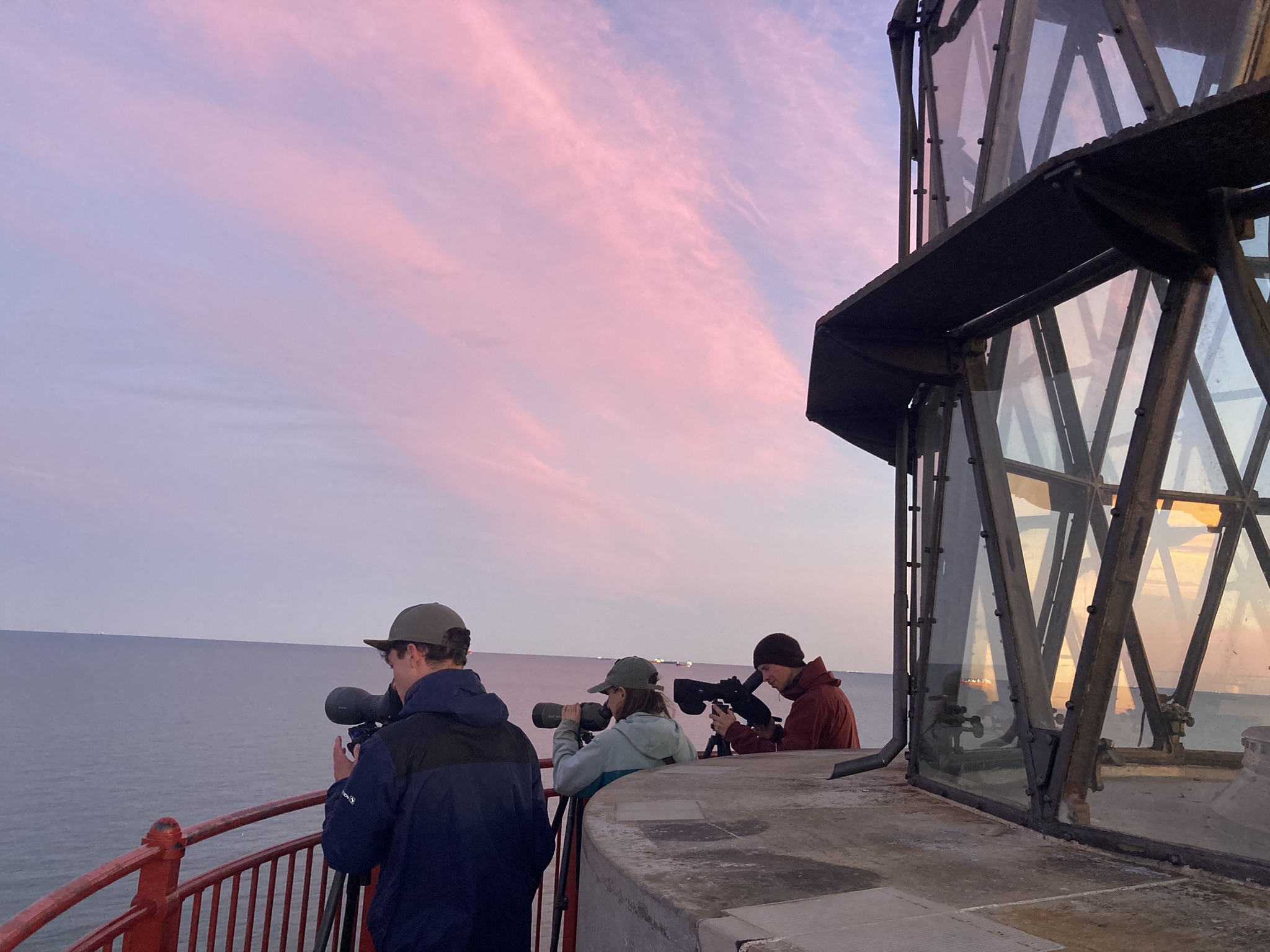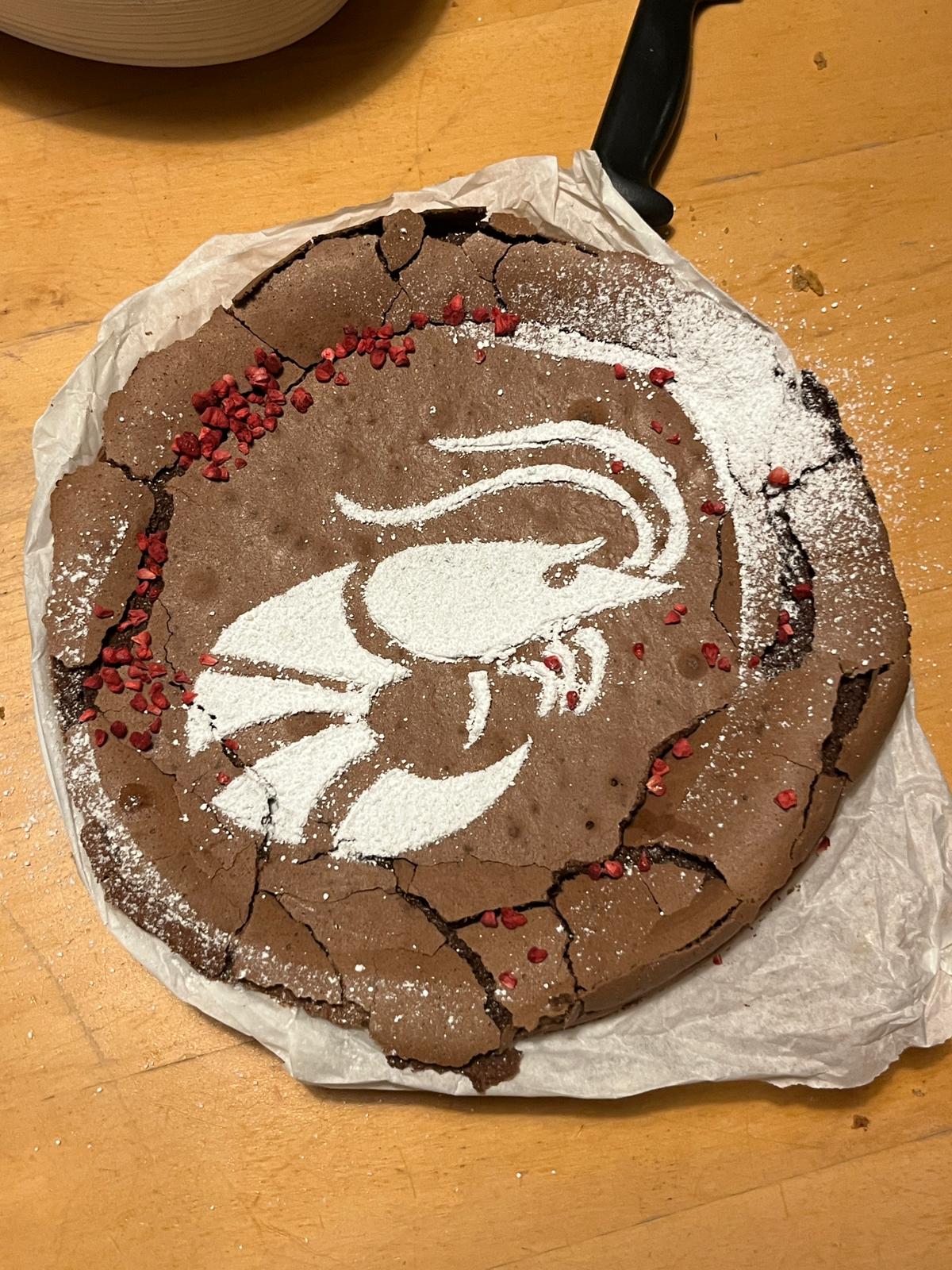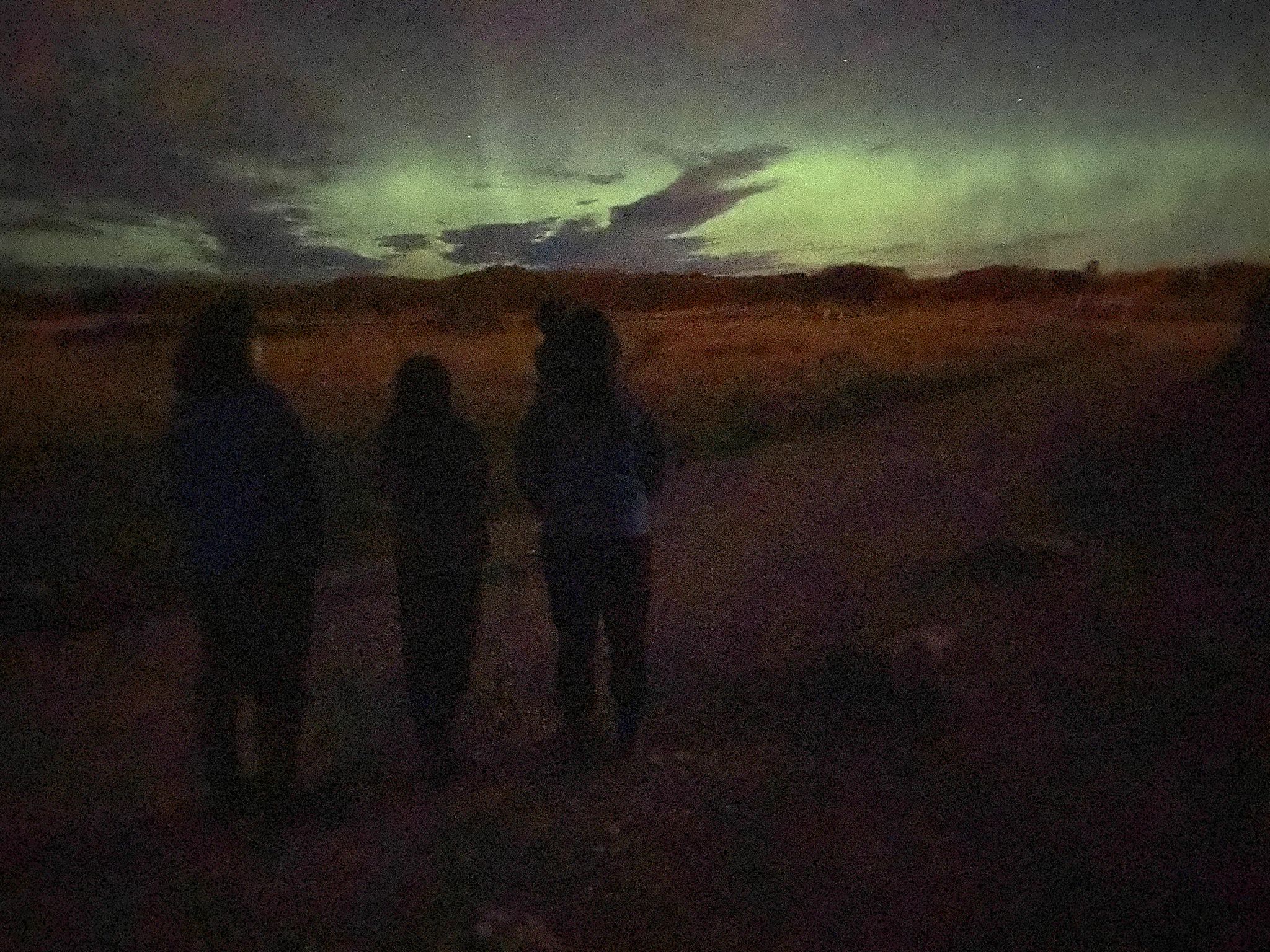Her på Skagen Fuglestations blog bringes korte nyheder i dagbogsformat om hændelser på fuglestationen.
Se indlæg fra måned: jan. (2)feb. (3)mar. (31)apr. (30)maj (31)juni (30)juli (31)aug. (31)sept. (30)okt. (31)nov. (30)dec. (9)
We don't birdwatch for fun we birdwatch for DUTY
This morning was rather windy and cold, but under orders from the boss we went to Kabeltromlen to try to net. After much hemming and hawing in the dark, we ended up with only three nets open, and we weren’t happy with how they looked in the wind. We immediately closed the nets and headed back to the lighthouse against gale-force winds, feeling good about our decision to quit netting today. No ringing meant that Mara had some time to work on her Master’s dissertation, while Amira and I cycled out to join the others at Nordstrand. I was the last to arrive and approached a very hygge scene of Amira, Miles, Florian, Simon, Knud, and a wee German tourist all huddled up together in some shelter under a dune.
It was a very pleasant morning in our cozy nook, sharing coffee and cookies and light banter. Seawatching from Nordstrand was very fun, and there was much to see today with plenty of eyes to spot things. There were again many auks (alkefugle) today, and a bit easier to see from our spot today a little closer to the sea. We also saw two peregrines (vandrefalk) coming in from the sea, flying close over our heads. Other highlights included a Goosander (Stor skellesluger) flying together with some red-breasted mergansers (toppet skallesluger), both red-necked and great-crested grebes (gråstrubet og toppet lappedykker), and an adorable flock of snow buntings (snespurv) resting on the beach. Florian had a busy morning clicking large flocks of hundreds of Allike (Jackdaws), which were cool to see coming straight at us from the sea in haphazard flocks.
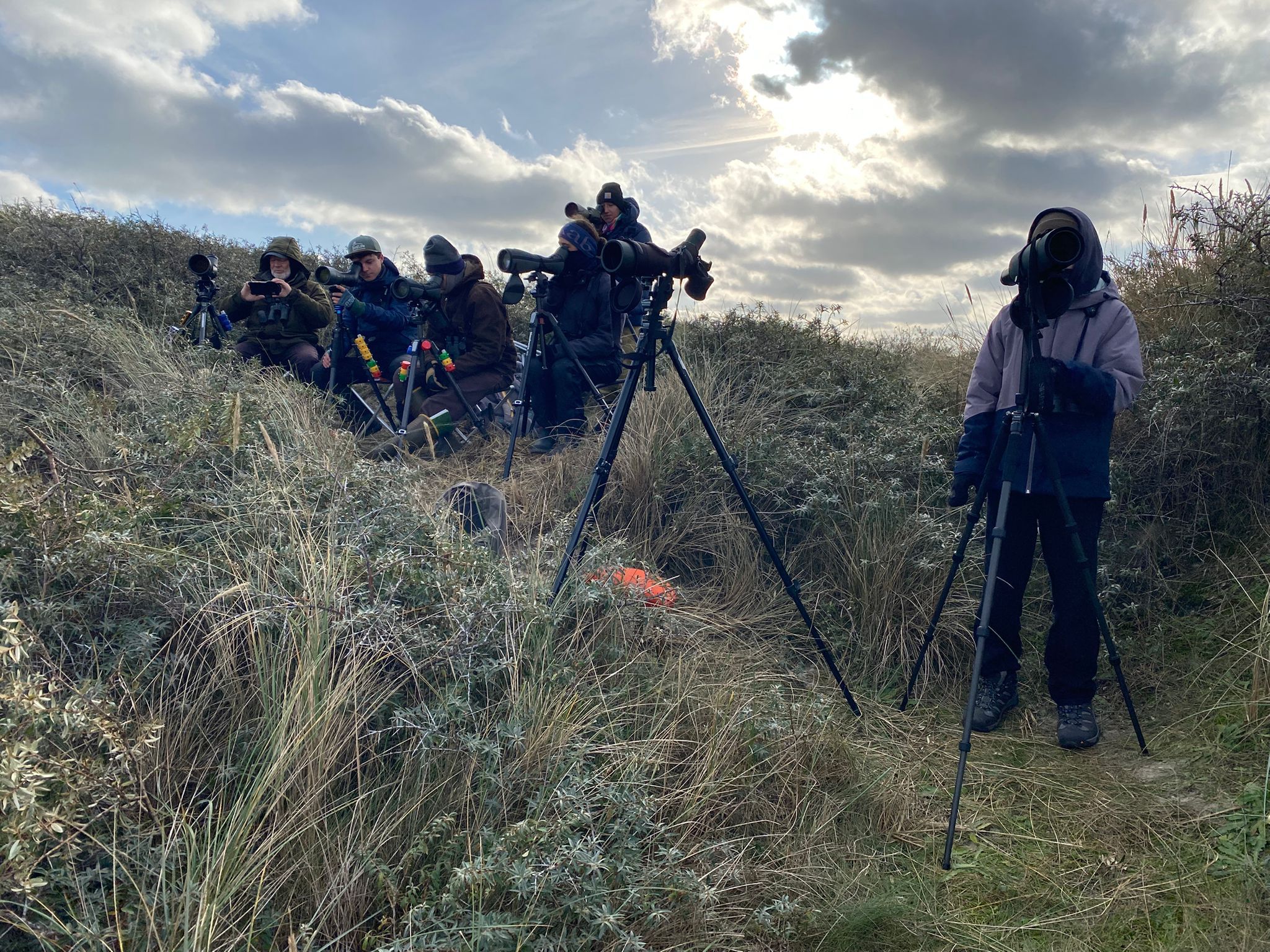
Allike, possibly the cutest of the corvids, always bouncing along merrily with their jaunty little calls, also have a vicious side. They have strong social hierarchies within the group, and when an individual is ousted for whatever reason, they can be violently pecked to death by the rest of the group. A terrifying example of mob mentality. Jackdaws are famous for being shrewd and observant, able to recognize human faces and interpret expressions. They can be a good friend or a formidable enemy, so beware how you treat these clever beasts. I also learned a fun idiom from Simon today: “fuld som en allike,” meaning “drunk as a jackdaw” (although the reason for this jackdaw slander is not particularly clear). Being a lover of both birds and words, I am very fond of bird-based idioms, and although we have many in English, I know of none that are so wonderfully species-specific.
After the end of the count, Florian, Amira and I went to visit Skarvsøen since we were already halfway there. We saw a wonderful flock of scrumptious halemejser, very busy foraging and being round and delicious, among a few other passerine species, and we stopped at the lake to admire some dabbling Krikand (teals), but there wasn’t too much happening in the wind (although Florian did see some Waxwings (silkehale) after we left). After this we all tucked ourselves away in the lighthouse for some office tasks and various meetings and other bits (with snacks).
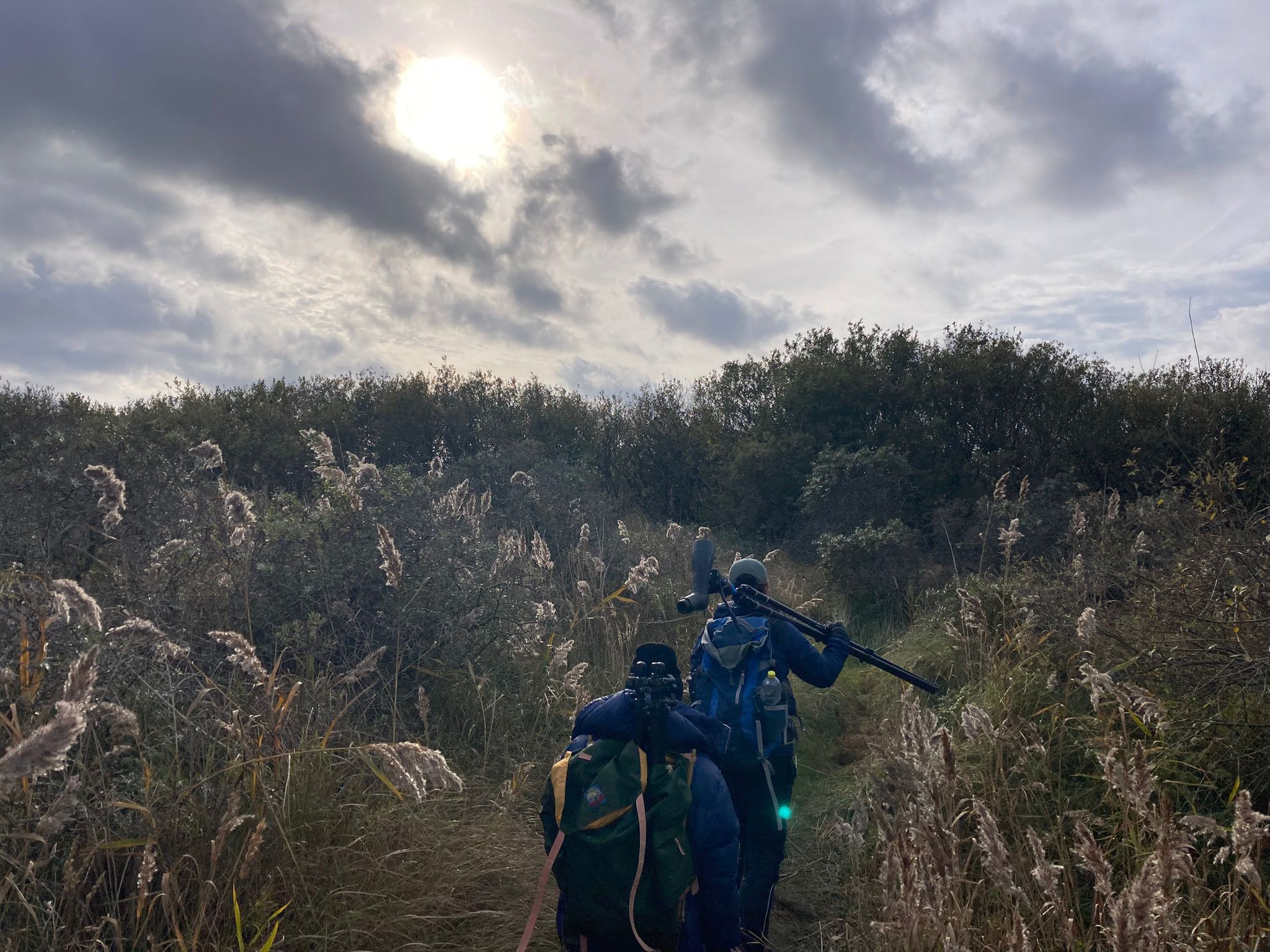
In other news, a goldcrest (fuglekonge) that we ringed on OCTOBER SIXTH 2025 (a historical day indeed) was retrapped on October 13th in Keldsnor in the south of Denmark. What a long journey for our sweet little puffball and we are so happy to hear of his safe travels so far!
After dinner, Simon took Amira, Miles and me out night catching at Ellekrattet and Storsig. We needed a lesson from the master because we are not so good at this on our own. We walked at breakneck speed through the wind, and in classic Simon fasion, trapped one enkeltbekkasin (Jack snipe) and one Woodcock (Skovsneppe) almost immediately. Very efficient indeed. This was very exciting, especially with the woodcock, to see this true beauty up close under the light. The white undertail feathers are the most brilliant titanium! They both flew away happily and we went to sleep feeling very satisfied.
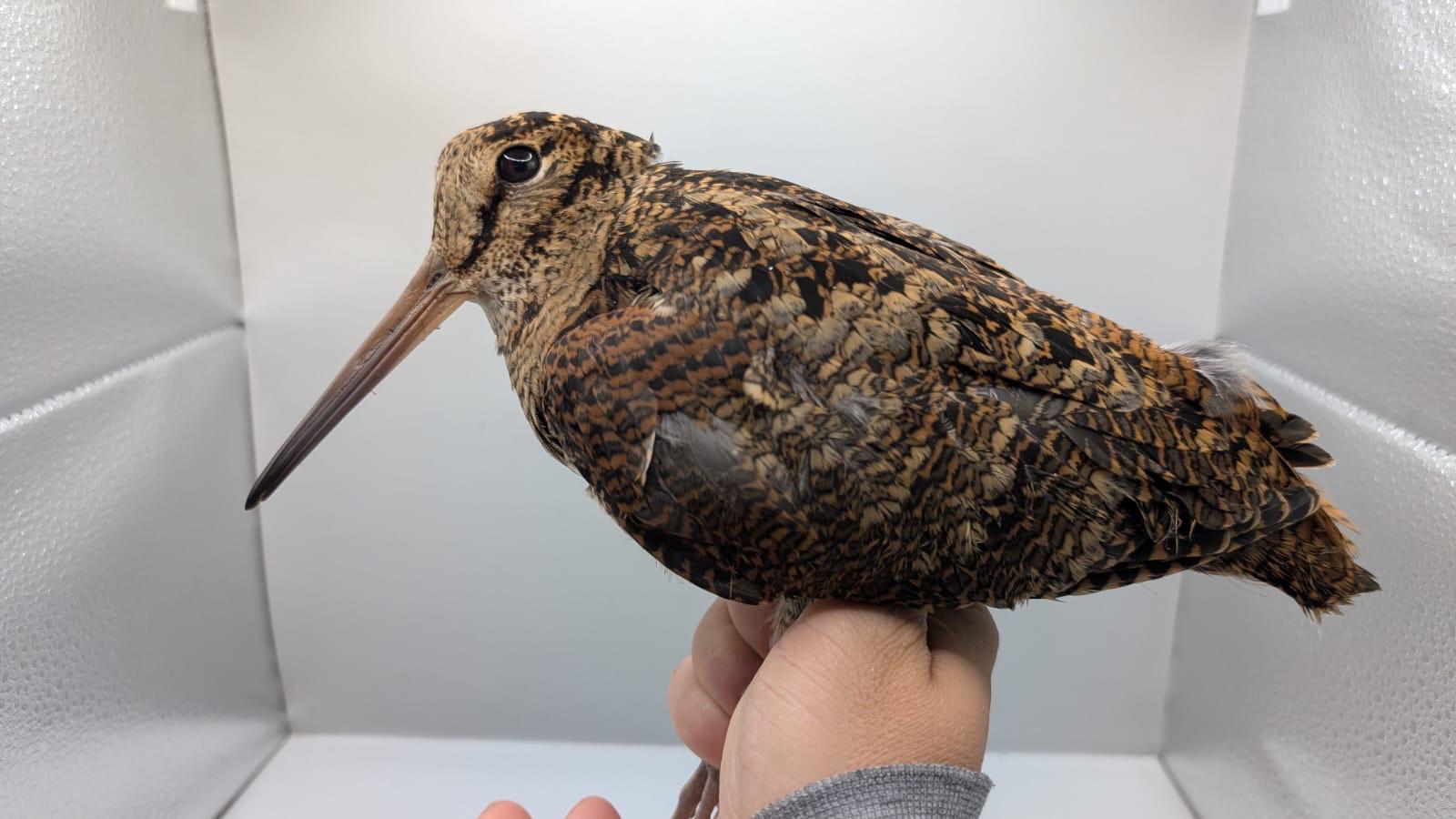
People: Mara Glane, Florian Hatt, Sarah Partridge, Amira Nuseibeh, Miles Scheuering, Knud Pedersen, Simon S. Christiansen, Tiago.
Today's observations from the area can be seen here.
A Blood Red Sunrise
This morning, as I was cycling out to the migration count at Worlds End 3, I flushed a raptor from the edge of the dunes. It was large and looked quite accipitrine-like, which made me think Eurasian Goshawk (Duehøg) but I wasn’t sure how likely that was. Knud was just behind me and I suggested it could be a common buzzard (Musvåge), which he thought was likely. However, when we approached, we saw that the raptor had been feeding on a pink-footed goose (Kortnæbbet Gås). This ruled out buzzard, as they wouldn’t be able to take even a relatively small goose like pink footed. We continued on to allow the goshawk to return to its breakfast, though Knud was able to get some looks at it later in the morning, confirming it was a young bird.
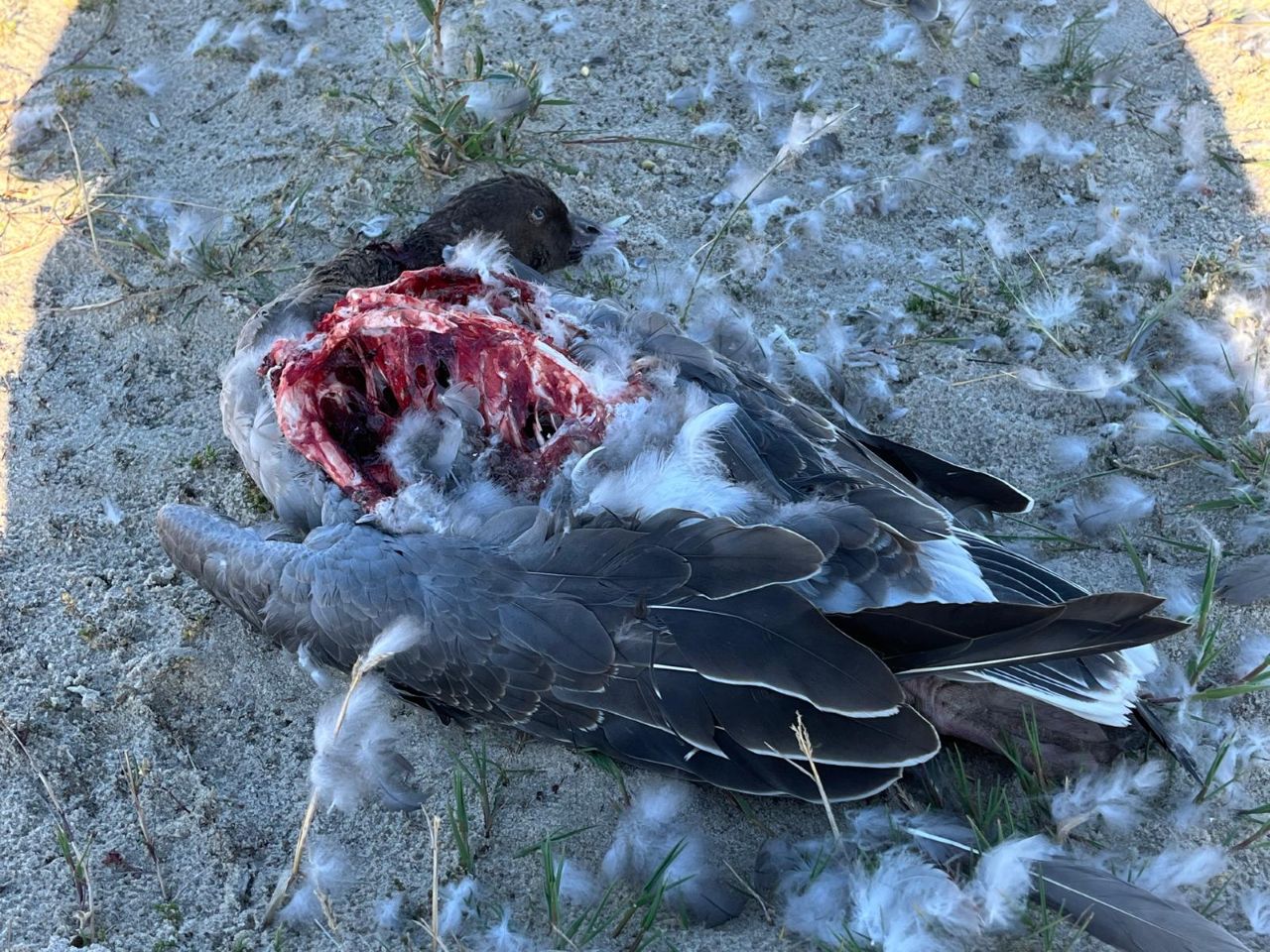
Pink-footed Goose (Kortnæbbet Gås) partially consumed by a Eurasian Goshawk (Duehøg). Photo by Miles
The goshawk sighting turned out to be a good omen, as we had several other good species during the count. I spotted a small alcid (alkefugle) flying northwest, which turned out to be an Atlantic Puffin (Lunde)! This was a lifer for me, and the third (and final) puffin species I have seen after Tufted Puffin (Toplunde) and Horned Puffin (Hornet Lunde) in the United States. Tufted Puffin has been recorded a handful of times in Europe, though never in Denmark, and Horned Puffin has never been recorded in Europe. Later, Florian had just commented on how it had been a good morning and I had see two lifers when he spotted a Eurasian Woodcock (Skovsneppe) migrating in over the beach. It had come in from the sea and flew directly past us before landing in the brush behind World’s End 3. I have not seen American Woodcock (Amerikansk Skovsneppe) either, so it was extra exciting to see this one!
It was a very good morning for interesting species, but also good to have Knud there to help identify some of the common species. There have been many Guillemots (Lomvie) or Razorvills (Alk) migrating southeast in recent days and we have not been sure how to identify most of them. Knud said nearly all alcids migrating southeast at this time of year are Razorbills and they are going to a large wintering area, further south in Kattegat. He also said that if we see flocks larger than 10, the majority will almost always be Razorbills. This was all really useful to learn, as it allows us to make more accurate counts.
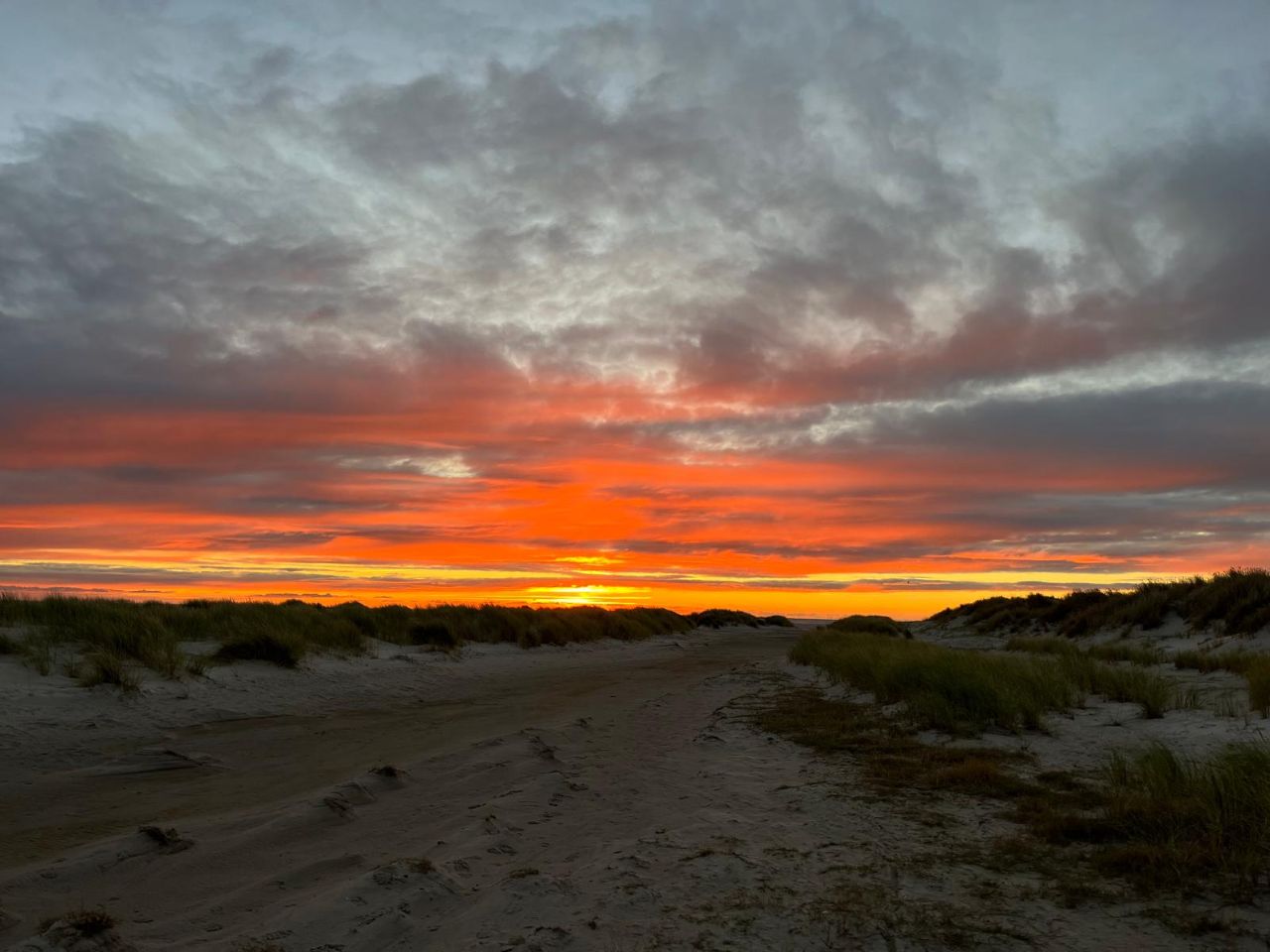
Sunrise from Grenen. Photo by Miles
The ringing started out quite cold and it was hard for Sarah, Amira, and Mara to keep their fingers nimble but they were rewarded for their effort as the activity increased throughout the morning. They had many blue tits (Blåmejse) and three more Bearded Reedlings (Skægmejse)! It is Mette’s birthday (Happy birthday Mette!) and she visited Kabeltromlen got to ring several birds!
The restaurant at the lighthouse, Blink, is closing permanently. This evening, they had a sausage party to celebrate the time they have been open. Maciek prepared some delicious sausages, and the crew and Simon hung out for a bit. Later in the evening Sarah baked some delicious cookies! We are always happy to have more cookies, and these are especially tasty.
Ringing Kabeltromlen:
Highlights from World’s End 3:
People: Mara Glane, Florian Hatt, Sarah Partridge, Amira Nuseibeh, Miles Scheuering, Knud Pedersen, Simon S. Christiansen, and Mette Møller Christiensen.
"Pibesvane & Sjagger" - would be a superior name for a band
Hej! I am really happy to be back at the station! It's now my third stay here, and I can tell you it is not getting any less exciting. After spending almost a week here, it feels like I never left.
About the day, prepared for a day full of birds, Sahra, Amira and I headed out to Kabeltromlen this morning. We were welcomed by flocks of Lomg-Tailed Tits (Halemejser) calling from the bushes. In the hurry out to the nets, Amira forgot to pack her apple and it was sadly left on the table in the kitchen. But no worries - Miles and his apple delivery service made sure that Amira would survive the big ringing day we had ahead of us! How nice!
The weather was perfect for ringing today and we were able to ring 107 birds. It was so busy that we had to strategically plan our ringing procedures and split up the ringing and the net rounds. We had great help though from Jeppe, Linda and Jesper! Highlights from the ringing did not go unnoticed in the constant stream of Wrens (Gærdesmutte) and Blue Tits (Blåmejse) to ring. We caught four new Twites (Bjergirisk), Yellowhammers (Gulspurv), a Coal Tit (Sortmejse) - especially cute - and my personal highlight a Fieldfare (Sjagger)!
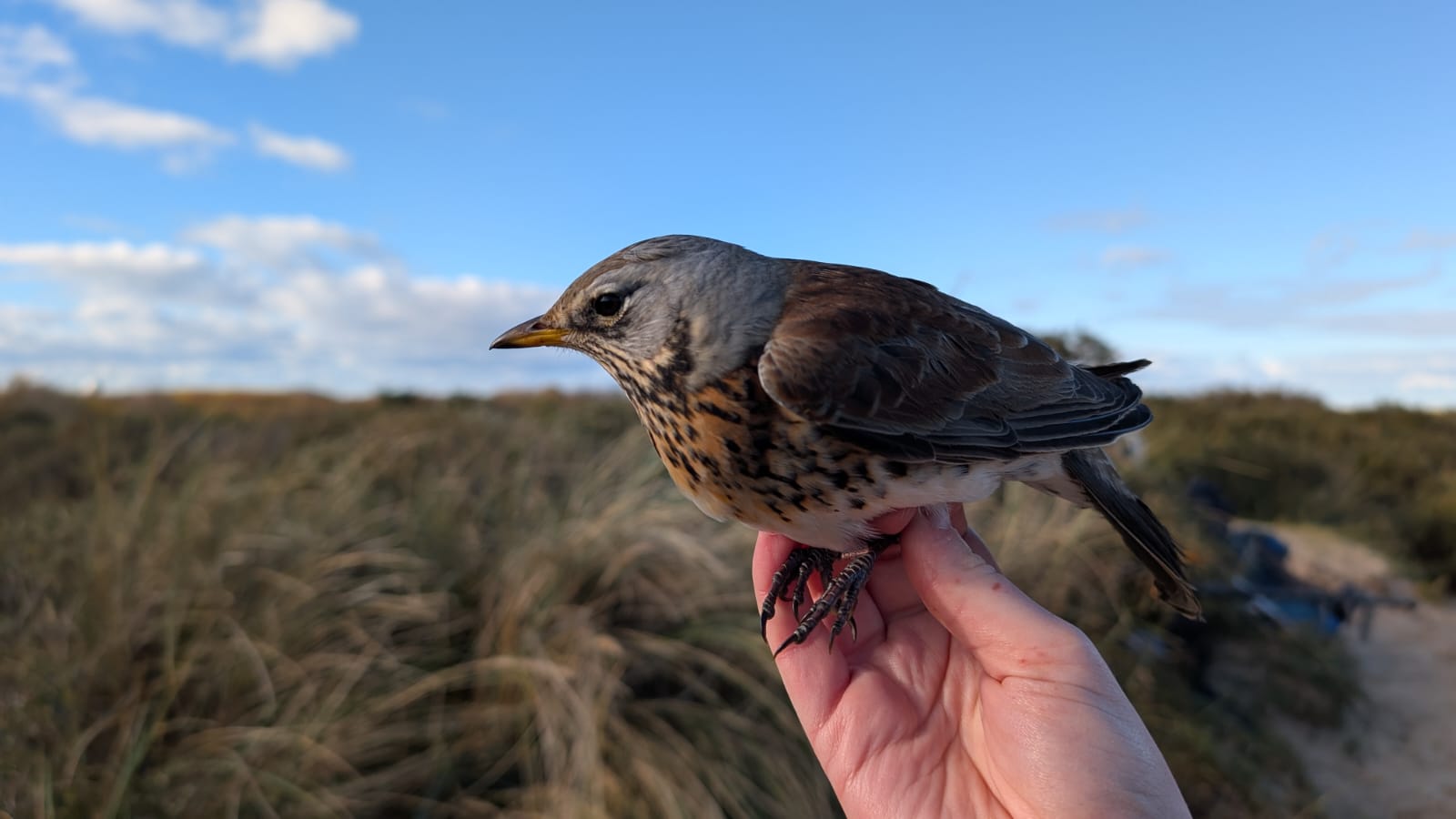
Fieldfare (Sjagger)
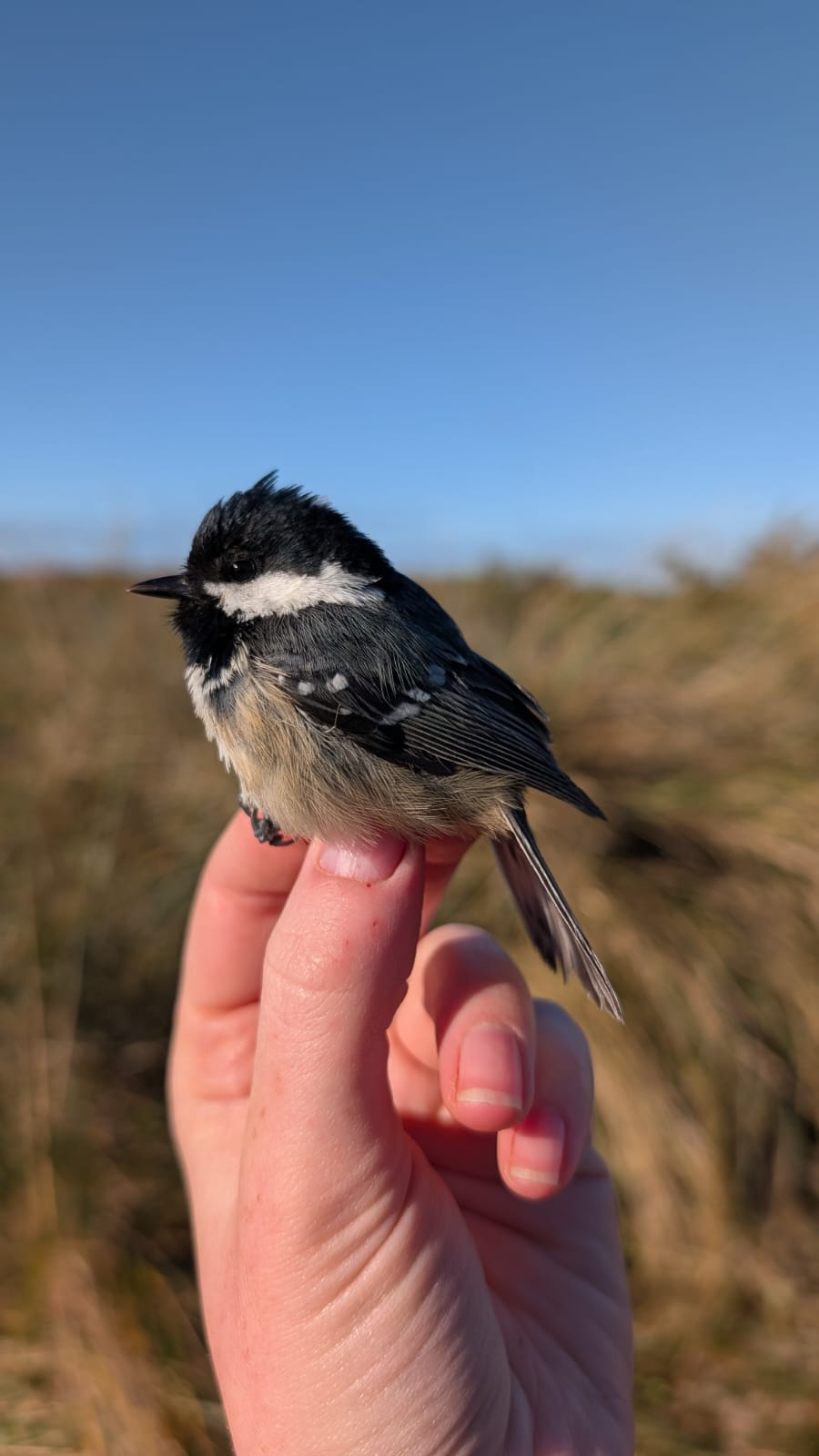
Coal Tit (Sortmejse)
While Simon was at Kabeltromlen to tell the guests of the guided tour about the ringing, he spottet a flock of geese flying together with swans. But what kind of swans? 3 Bewick's Swans (Pibesvane)! They were only a little bigger than the geese and had a lot of black in the beak and a relatively short neck.
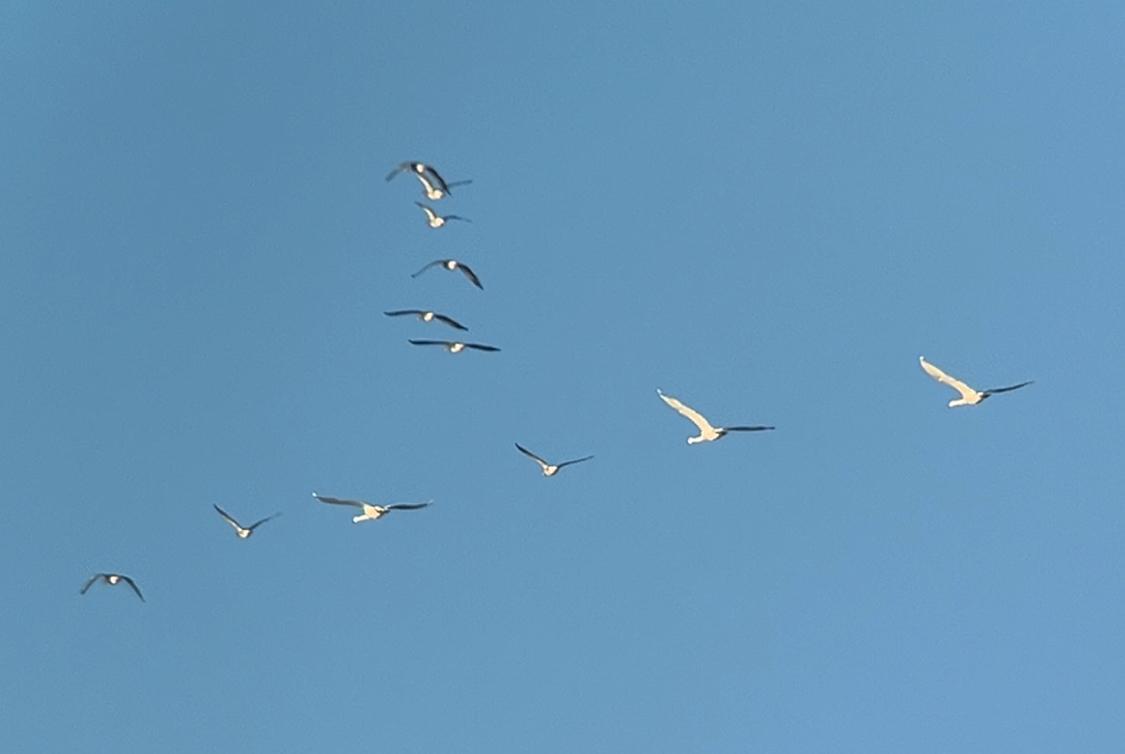
Bewick's Swans (Pibesvane) in a flock of geese
Over at the Obs, Miles and Florian had a rather calm morning. Miles counted 1150 Auks (Alkefugle) and later in the morning they had some big flocks of Fieldfare (Sjagger). Pretty far away, but still nice, Florian was able to spot some Waxwings (Silkehale). As nice as the boys are they came over to us ringers after the obs, to help us finish the ringing and close the nets.
We came home pretty late from our extended morning duties and had a late lunch. Miles, Amira and Sahra went into town for some shopping and data was entered in a group effort later. Now cleaning day is succesfully completed and we are all excited what tomorrow will bring.
Ringing Kabeltromlen:
Sjagger 1
Sangdrossel 1
Gulspurv 3
Grønirisk 1
Musvit 3
Gærdesmutte 14
Jernspurv 1
Stillits 2
Bjergirisk 4
Rødhals 2
Skægmejse 7
Sortmejse 1
Kvækerfinke 6
Blåmejse 19
Lille Dompap 7
Stor Dompap 5
Dompap 1
Munk 2
Rørspurv 2
Gransanger 1
Fuglekonge 18
Sydlig halemejse 2
Halemejse 2
Træløber 2
Total 107
Ringing Jennes Sø (Michael Ancher):
Gærdesmutte 2
Rødhals 1
Fuglekonge 4
Topmejse 1
Sortmejse 9
Blåmejse 12
Musvit 4
Træløber 3
Skovspurv 2
Bogfinke 1
Lille Gråsisken 6
Total 45
Highlights from the observations:
Today’s observations from the area can be found here
People: Mara Glane, Florian Hatt, Sarah Partridge, Amira Nuseibeh, Miles Scheuering, Michael Ancher, Simon S. Christiansen, Linda & Jeppe Rørbæk and our guests Mette & Jesper.
Not all treasure is silver and gold
This morning, Mara, Miles, and I opened the nets a little early, anticipating an early close due to the rain. It turned out to be fairly busy with birds today, with a good variety of species. We were very pleased to catch four twites (bjergirisk) today, which are so cute and round! We also had a redpoll (Lille gråsisken) and two siskins (Grønsisken), all very cute indeed! It was very nice to compare these similar species and get to look at the twites up close, with their handsome pink rump feathers. I was very excited on one net round to find another flock of halemejse, my very favourites!! These little sugary treats were mostly a northern flock (nordlig), with gorgeous gleaming white head feathers. The flock also included some retraps from earlier in the week, so it was nice to greet them again and nice of them to bring some new friends from the north.
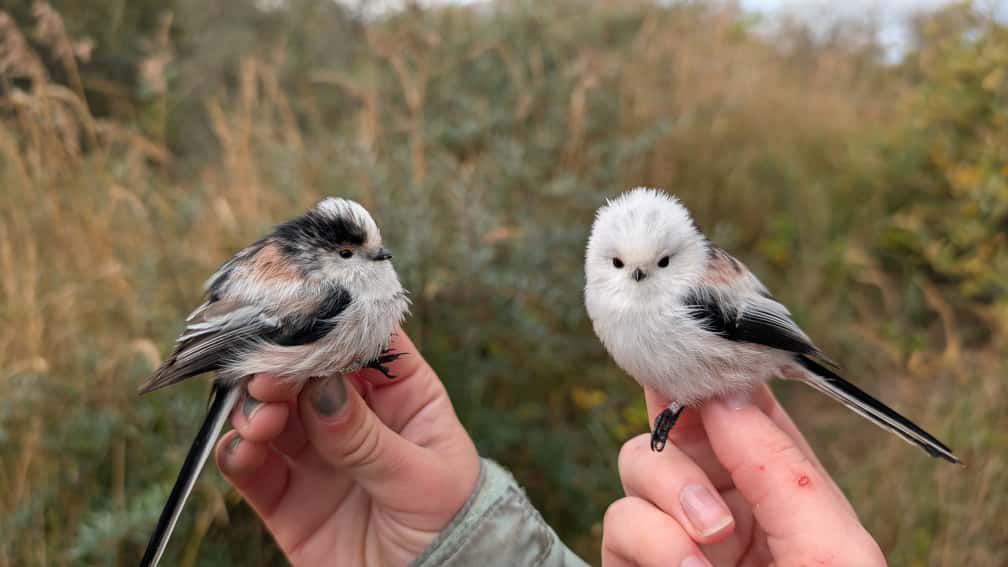
A Norlig and Sydlig Halemejse together
These bjergerisk that we see here are likely coming from Norway and northern Scandinavia, to spend the winter here or carry on to central Europe, where they forage in large flocks, feasting on seeds and enjoying the winter. What tiny treasures to find in the nets today!
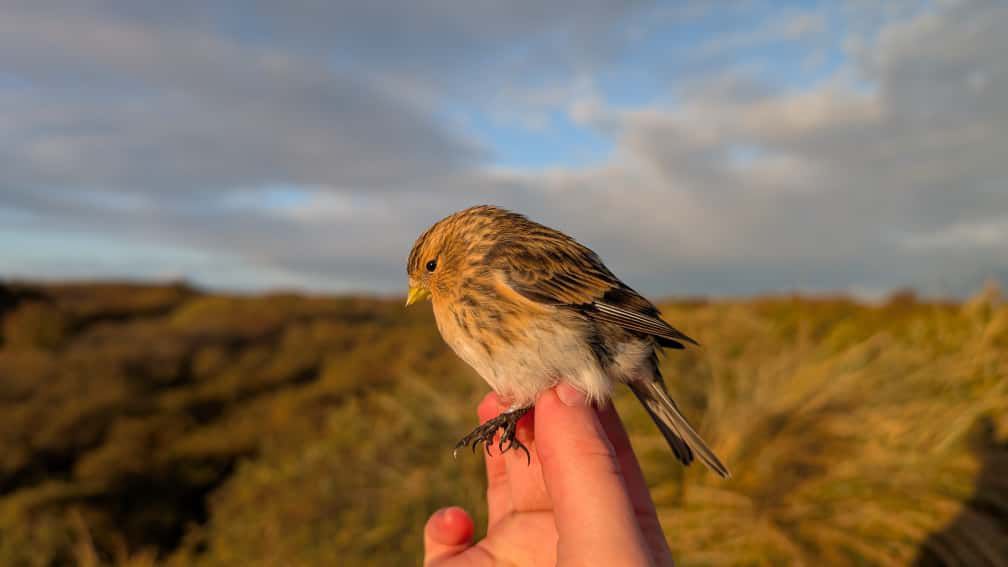
Twite Glorious Twite!!!! (Bjergirisk)
After Simon brought his class by Kabeltromlen to see some of the birds, we saw that rain was coming and quickly closed the nets, with quite a few birds in the closing round. We then scrambled into the tent to keep our little munchkins dry while they waited their turns to get rings.
In other bird ringing news, today Michael Ancher retrapped a treecreeper from Finland! Welcome little friend.
Meanwhile, Florian and Amira went to migration count at World’s End III. They also had to leave a bit early because of the rain, but still they managed to see over 1,000 auks (lomvie/alk), large flocks of jackdaws (Allike), and a small flock of waxwings (silkehale), which they were both very happy about.
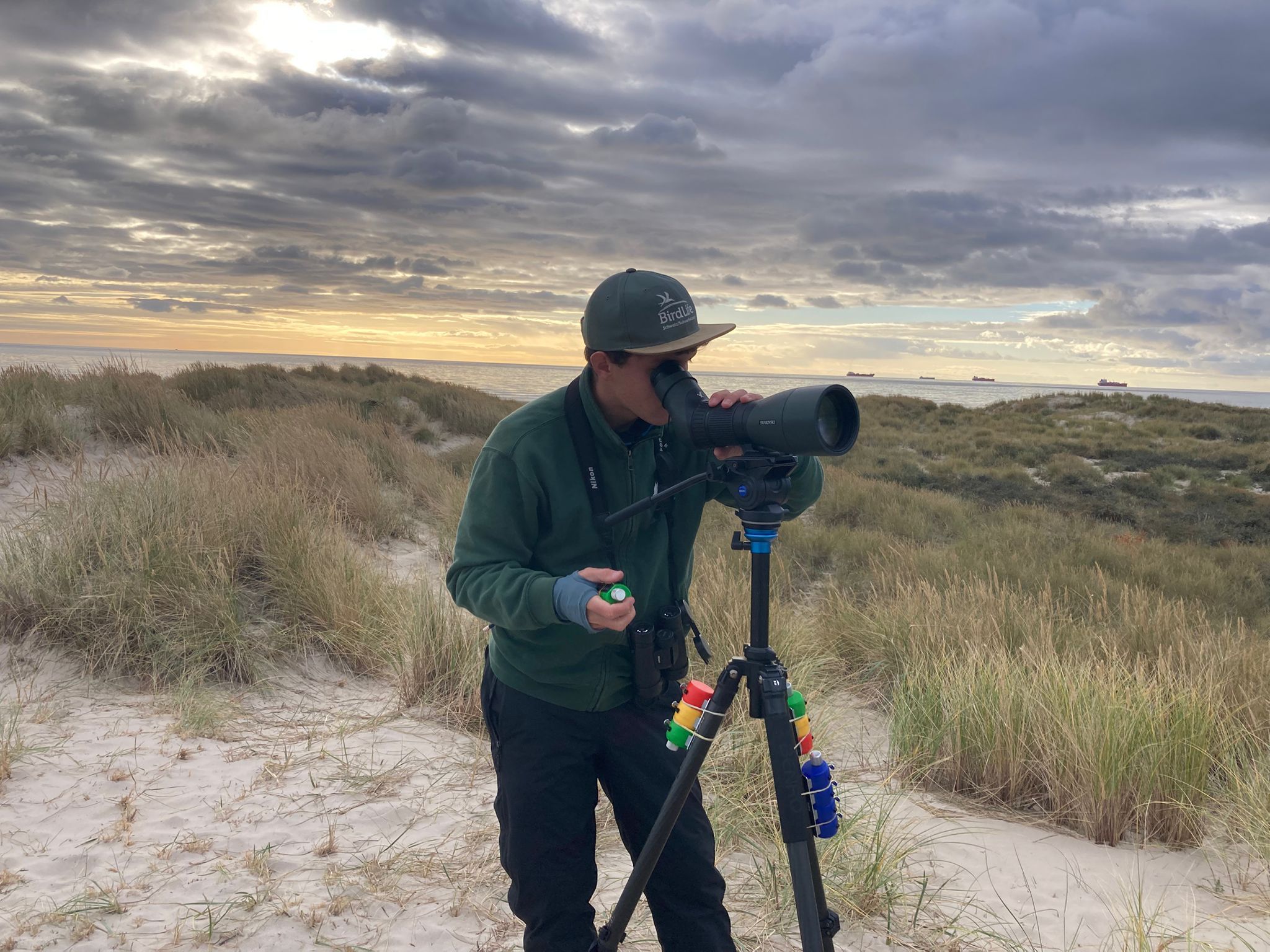
Fabric Florian clounting 670 Allike with a clicker
We then reunited at the lighthouse for lunch and data entry, and in the afternoon went out birdwatching in the wintery sun. Mara and Florian saw a kingfisher (Isfugl) at Jennessø. Now Mara cooks us a tasty dinner and then we will cozy up for a hygge movie night together on this bitter cold night.
Ringing Kabeltromlen:
Vindrossel 1
Solsort 2
Grønirisk 4
Rødhals 4
Gærdesmutte 6
Bjergirisk 4
Grønsisken 2
Gråsisken, Lille 1
Jernspurv 1
Dompap, Stor 2
Dompap, Lille 6
Dompap 4
Bogfinke 1
Munk 1
Blåmejse 2
Fuglekonge 8
Gransanger 1
Halemejse, Nordlig 6
Halemejse, Sydlig 1
Halemejse 1
Today's observations from the area can be seen here.
People: Mara Glane, Florian Hatt, Sarah Partridge, Amira Nuseibeh, Miles Scheuering, Michael Ancher, Simon S. Christiansen, and our guests Mette and Jesper.
A Stonechat and more cake!
Mara, Miles and I had a really lovely morning ringing at Kabeltromlen today. The sun was shining and, despite not as many birds as usual, we had an impressive variety of species, 16 in total! The highlight for me was definitely a Stonechat (Sortstrubert Bynkefugl) in the first net round; it was such a round and cute juvenile female bird! It’s also always a good day when we catch a flock of Long-tailed Tit (Halemejse)! Simon passed by for a few hours with the group from his nature education course this week, so it was great to be able to show them how we ring the birds.
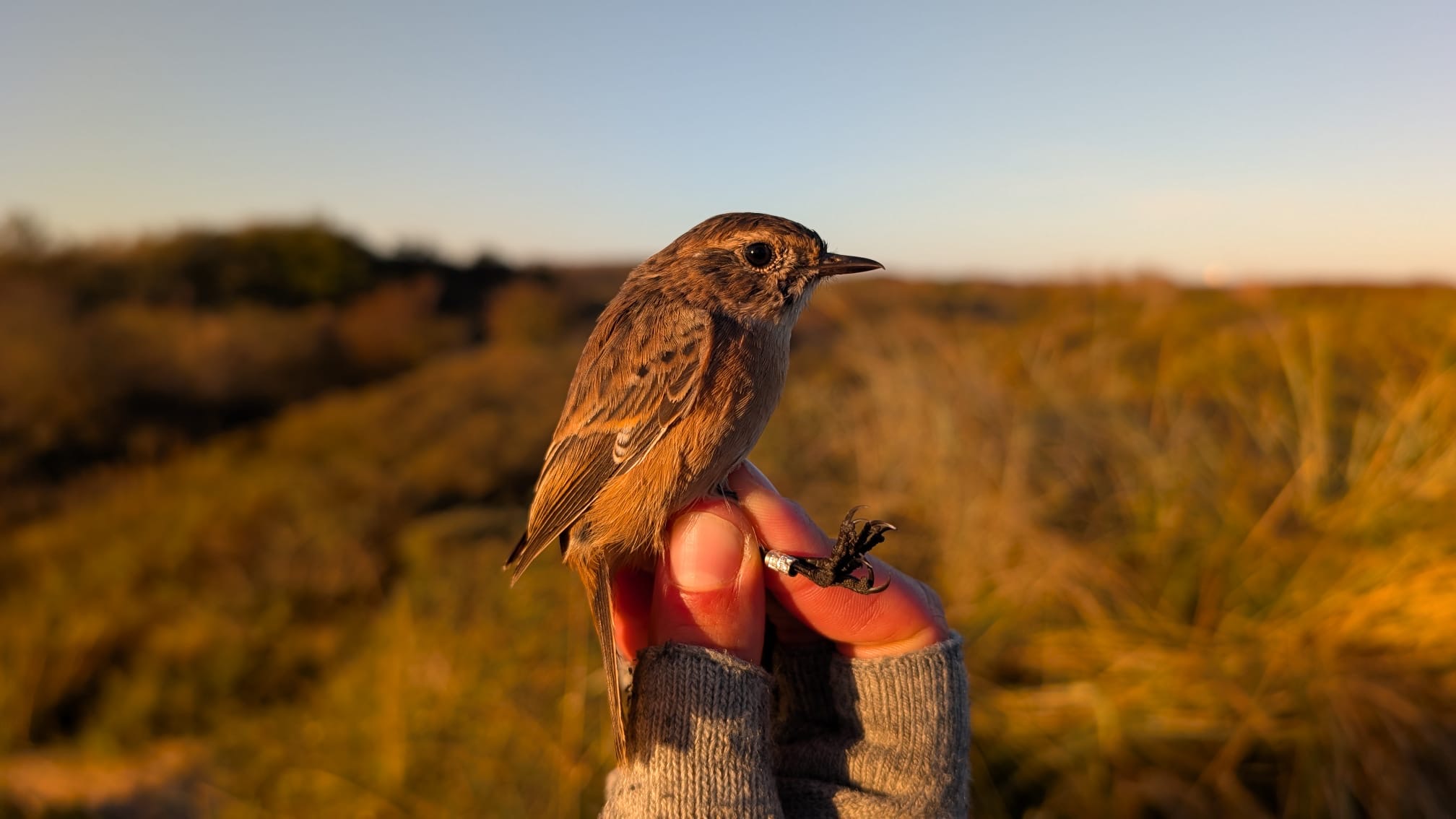
Stonechat (Sortstrubert Bynkefugl) - a young female (Photo by Mara)
The observers had a much more intense (but still lovely) morning, especially Sarah who was tasked with counting the Auks (Lomvie/Alk). She had to concentrate extremely hard but was rewarded with a count of 2032 flying past in the 4 hours of observations! A group of Snow Buntings (Snespurv) sitting on the beach was also a real treat and meant they could look through the scope to study and appreciate them fully!
Once we got back to the lighthouse, we (Miles, Sarah and I) went for a fun little run to Jennes Sø and around the heathland in that area. During our run, it was a coincidence that we bumped into Michael Ancher on his cycle home from Jennes Sø where he’d been ringing today. The run was great because it warmed us up ready for our swim in the sea, where we were also joined by Florian and our guest Jesper too. I was very happy when a Razorbill (Alk) came swimming up to us; it kept diving down under and then popping back up closer to us which was exciting to watch!
Sunset from the top of the lighthouse
We then all settled down on the sofa for some data entry for the rest of the afternoon. I went up to the top of the lighthouse to watch the sunset and a few minutes later Sarah joined me. She appeared and said she could hear medieval folk tunes playing through the lighthouse speakers along with the usual bird song recordings. In reality, it was just me up there playing some tunes on the recorder, but maybe this kind of music would make the walk up all those steps more entertaining and atmospheric!
We all enjoyed a lovely stir fry dinner cooked by Miles, and he even made dessert, the most chocolatey chocolate cake ever, decorated with a Bearded Reedling (Skægmejse) created with powdered sugar. What a feast!
Chocolate cake baked by Miles and decorated by Sarah
Ringing (Kabeltromlen):
Ringing (Jennes Sø):
Highlights from World’s End 3:
Today’s observations from the area can be found here
People: Mara Glane, Florian Hatt, Sarah Partridge, Amira Nuseibeh, Miles Scheuering, Michael Ancher, Simon S. Christiansen, and our guests Mette and Jesper.
First Søkonge of the Season
After such a good day of ringing yesterday, I (Miles) was excited to join again. It was quite foggy in the morning, but Amira, Mara, and I were still able to open the nets. It was chilly this morning, and with the fog, felt quite autumnal for the first time this season. There have been quite a lot of visitors at the ringing table this week, and though we have been a bit busy, it has been really rewarding to show the ringing process (and the cool birds) to so many people! Simon was able to join the ringing for the start, but left midmorning to teach a course for nature educators about teaching to children.

Simon's course about nature education for children. Photo by Simon
There were still many Bearded Reedlings (Skægmejse) in the area, and we caught and ringed another 4 today! Bearded Reedlings are a colonial breeder and have a highly localized breeding distribution within reedbeds. In the fall, they form large flocks and disperse to new reedbed sites. During this period, young birds pair up, which has resulted in us catching a lot of males and females together. While it is unclear if they keep these pairs into the breeding season, there is evidence these pair bonds are maintained through dispersal behavior, which may be a strategy to ensure there is an even sex ratio following dispersal.
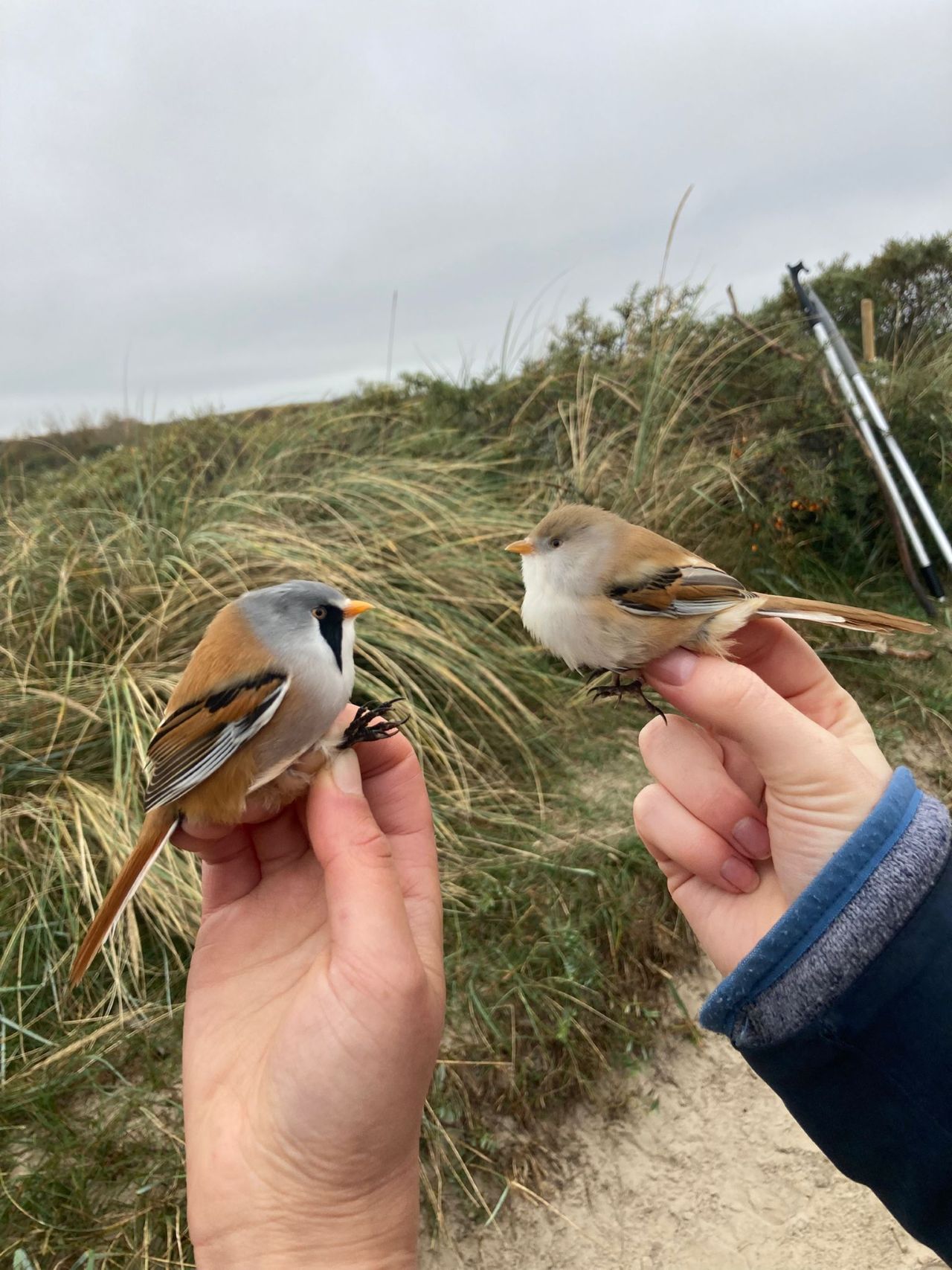
A pair of Bearded Reedlings (Skægmejse). Photo by Amira
The fog prevented the observers (Sarah and Florian) from starting the migration count right away, so they joined us at the ringing for the first hour. Once the fog cleared, there were many auks (alkefugle), including our first Little Auk (Søkonge) of the season! This was a lifer for Florian and brought much excitement. They also saw a Great Northern Diver (Islom), also called a Common Loon and many European Golden Plovers (Hjelje). After the count, Florian searched for passerines in the sea buckthorn (havtorn) west of Worlds End 3 but unfortunately didn’t find much more than a thorn in his boot. However, when he reached the sandormen track he heard a Red-throated Pipit (Rødstrubet Piber) calling and was able to see it as it flew overhead. He was able to obtain a good recording, which can be found in the observation on DOFBasen.
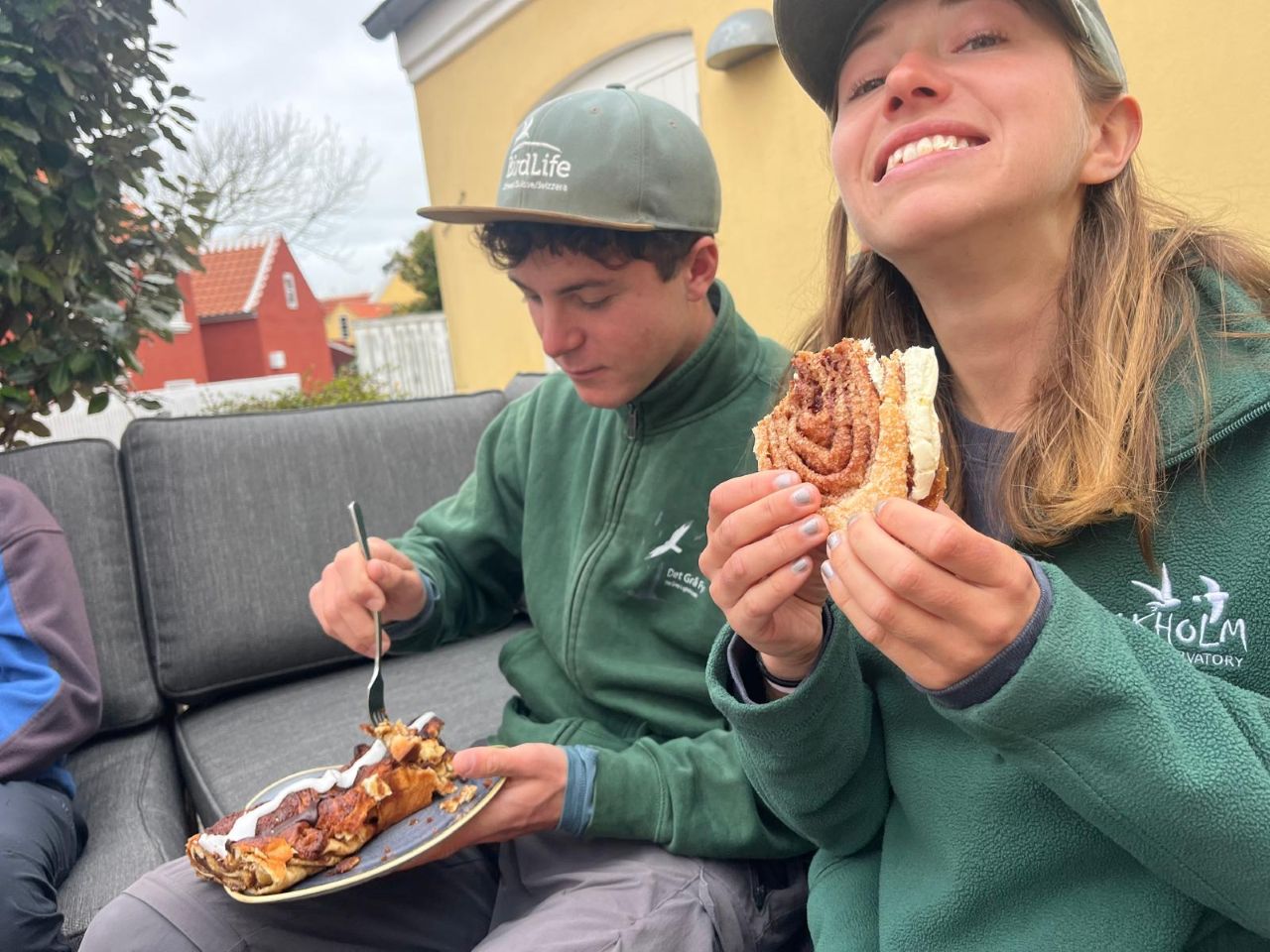
Sarah and Florian enjoying danish pastries at the bakery in Skagen. Photo by Miles
Upon returning to the lighthouse, we quickly ate lunch and then headed to the bakery in town to get a cinnamon waffle (kanelvaffel) before they sold out. These are Sarah’s favorite cakes, and she has been very excited to introduce the rest of the crew to them. While in town, we visited some secondhand stores and Sarah found a very nice winter jacket, which will likely be quite useful when she goes to the Faroe Islands in a week. This evening, Amira gave us a true British cultural experience by cooking jacket potatoes with baked beans for dinner. They were delicious!
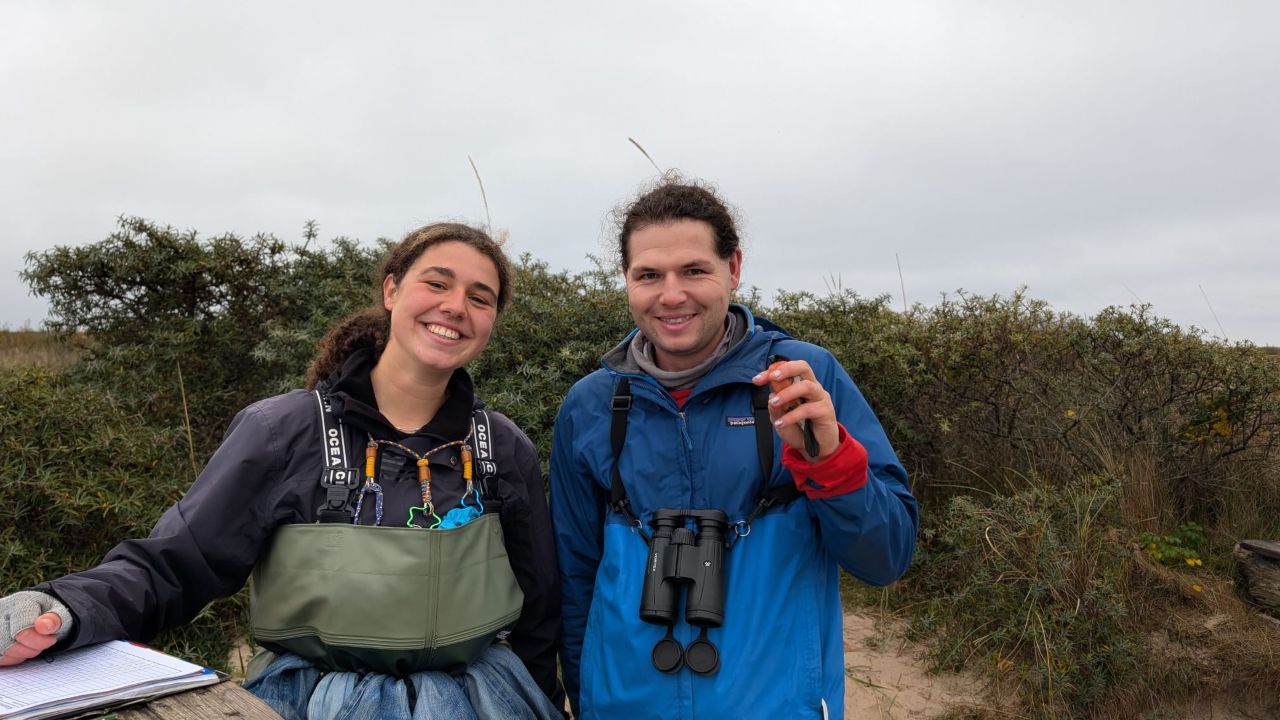
Today’s observations from the area can be found here
People: Mara Glane, Florian Hatt, Sarah Partridge, Amira Nuseibeh, Miles Scheuering, Michael Ancher, Simon S. Christiansen, and our guests Mette and Jesper.
Bearded Reedling Day
Same as yesterday, it was another day with hardly any wind. Accordingly, Sarah and I didn't have to get very warm clothes, as it was already relatively mild in the morning. The passerine activity was actually quite good in the early hours, with several species attempting to migrate but turning back before reaching the sea. Many species of finches flew around, including Common Crossbills (Lille Korsnæb). With crossbills in particular, it is worth listening carefully and if necessary making audio recordings. Parrot crossbills (Stor Korsnæb) could soon appear over Grenen!
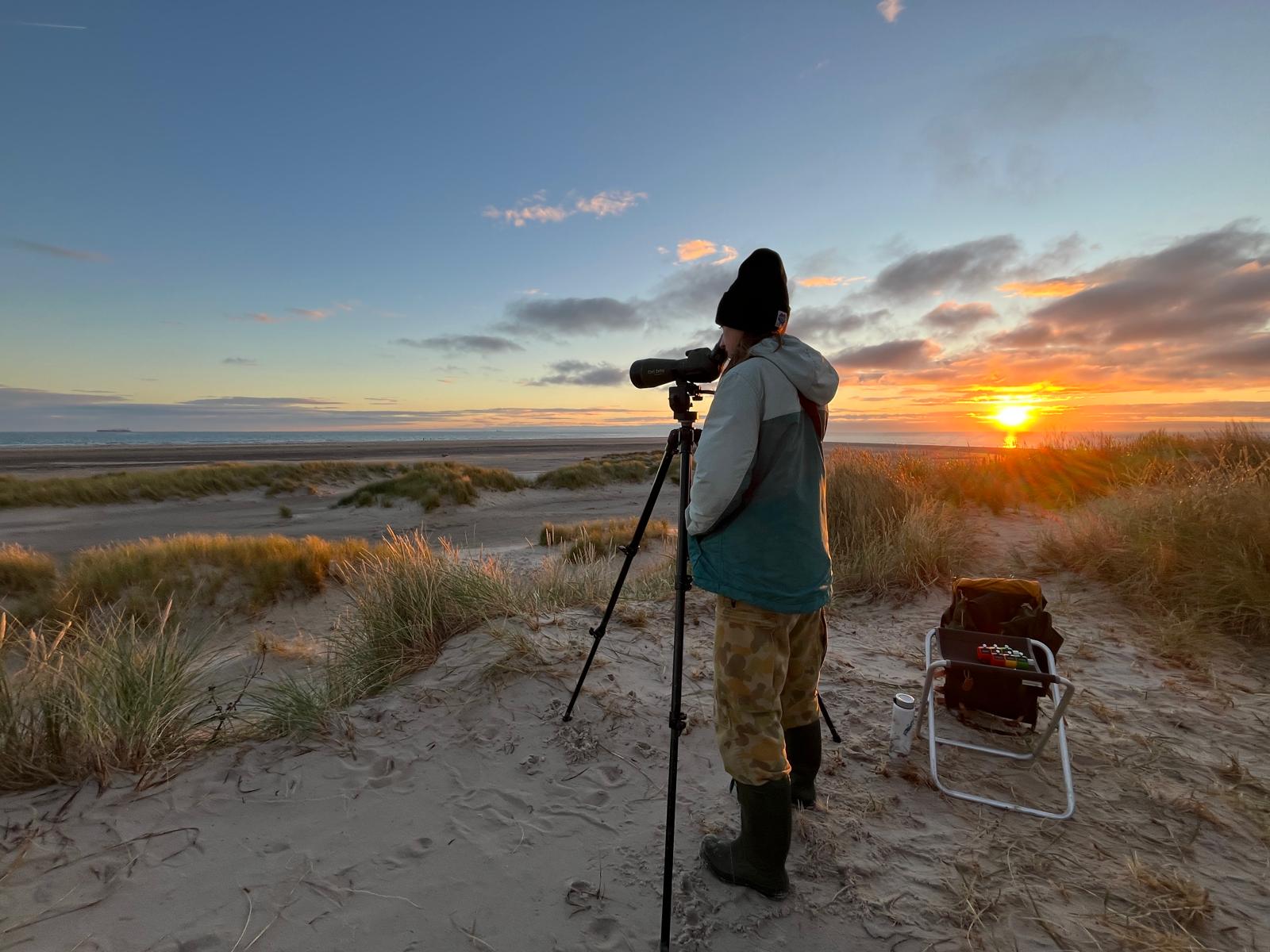
Calm morning at the migration count
Over the sea, several bigger groups of Guillemots (Lomvie) and Razorbills (Alk) flew by again. It was also nice to see a small flock of Purple Sandpipers. Due to the good visibility, we were also able to spot a handful of fulmars in the distance. Suddenly we heard something calling behind us. They were definitely Bearded Reedlings (Skægmejse), and shortly afterwards we discovered a flock of 15 individuals flying around! Miles, who was at the ringing, had never seen any before, so I called him on Zello and told him to keep an eye on the sky in case the flock flew over Kabeltromlen. It took less than a minute for a call to come back saying that they had just found two Bearded Reedlings (Skægmejse) in the nets. Since we observers had never seen any in the hand before, we decided to quickly cycle back to take a look at these beautiful birds. Even though the count was briefly interrupted as a result, it was a very good decision! For me, it was definitely a highlight to get to see this fascinating species up close!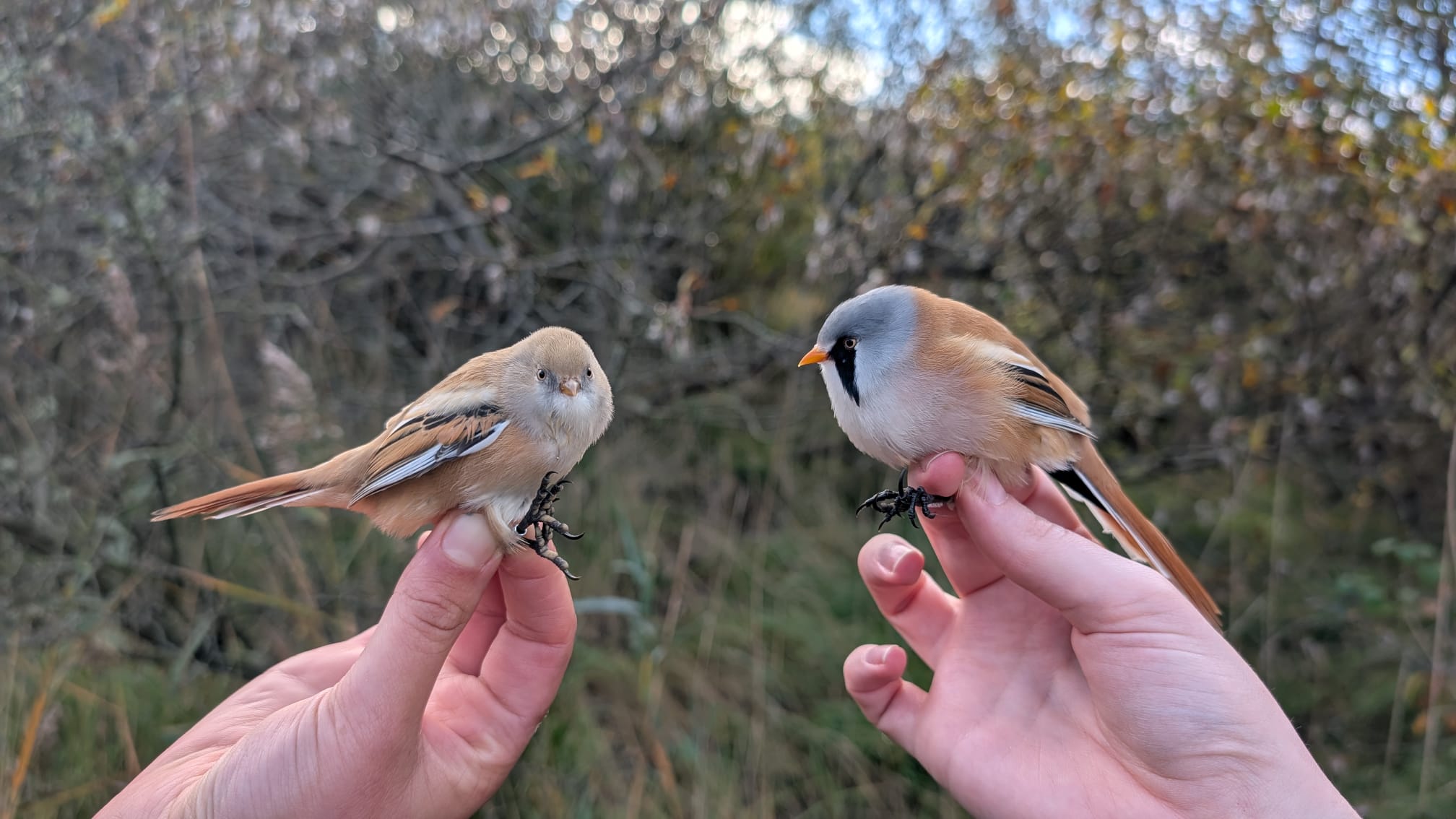
Super cute pair of Bearded Reedlings (Skægmejse)!
After that, I headed back very fast and started later counting the resting Common Scoters (Sortand). Because there were so few waves, many of them were visible today, so I was motivated to count as accurately as possible. This took me quite a long time and ended up not even as accurate as I would have liked, because some of them kept flying around. However, the 1750 individuals still meant a respectable number, which was nice.
Afterwards, I went to do some birding at Skarvsøen. The bushes there have consistently proved to be a good spot for passerines over the last few weeks. In particular, I always found many chiffchaffs here. This gives me hope that I’ll maybe find a rare siberian warbler here this autumn! But it didn't happen today. Instead, I was able to observe again a nice flock of Bearded Reedlings (Skægmejse). The highlight of this small trip was not a passerine, but an adult male Hen Harrier (Blå Kærhøg) at Reservatet! What a beautiful raptor!
Back home, I heard that the ringers had caught three more Bearded Reedlings in the last net round - it really seems to be a good day for them! In the afternoon, refreshed by a swim, they checked some ringing sheets before our guests invited us to dinner with a delicious vegetarian lasagne!
Ringing (Kabeltromlen)
Skægmejse 5
Vindrossel 3
Solsort 2
Grønirisk 11
Musvit 2
Gærdesmutte 15
Rødhals 4
Stor Dompap 2
Lille Dompap 2
Bogfinke 2
Munk 2
Rørspurv 3
Fuglekonge 4
Gransanger 1
Træløber 1
Blåmejse 4
Kvækerfinke 3
Total: 66
Ringing (Jennes Sø)
Stor Flagspætte 1
Blåmejse 2
Musvit 4
Sortmejse 1
Topmejse 1
Nordlig Halemejse 4
Fuglekonge 4
Gærdesmutte 3
Lille Dompap 1
Nordlig Gråsisken 1
Lille Gråsisken 16
Grønsisken 2
Total: 40
Highlights from World's End III
Skægmejse 15
Today’s observations from the area can be found here
People: Mara Glane, Florian Hatt, Sarah Partridge, Amira Nuseibeh, Miles Scheuering, Michael Ancher, Simon S. Christiansen, and our guests Mette and Jesper.
There's nothing sweeter than a long-tailed tit
This morning was very cold when Amira and I went to open the nets at Kabeltromlen, but it was not windy at all, so we could open all the nets and then huddle together for some coffee at the Kabeltromlen to see the beautiful sunrise. We were joined by Lisa, Simon, Gabriel, and some guests before the first round. It was a fairly busy morning with a steady and lägom flow of birds into the nets, with a nice variety of species. Gabriel and I were very happy indeed to come across a flock of absolutely gorgeous long-tailed tits (Halemejser) on one of the early rounds. They are very round and soft and smell like marshmallows and I wish they could come live with us in the lighthouse. We also had some treecreepers (træløber), and plenty of goldcrests (fuglekonge) again.

Stillits
It was truly abysmal in the middle of the morning to have to say goodbye to Gabriel, who we have grown to adore. In fact, there was so much moaning and wailing from Amira and me after he left that Simon accused us of turning into “Skagen Silly Observatory” and had to take a short break from us. We carried on with the ringing feeling like we lost a wheel, but luckily we did find another flock of soft halemejser to mend our broken hearts. All but one of the flock was in the net, and the lonely one followed us through the reeds for some time calling plaintively until she, too, flew into one of the next nets and got to join her friends in the box. When ringing the long-tailed tits, we always keep them with us until the last one is ringed and release them all together because they can’t bear to be apart.
Halemejser are a social species and have strong family ties. Being so tiny, they lose body heat easily in the cold, and cope with this by roosting close together (also known as snuggling) to share heat. So cute! They spend most of their time together, foraging as flocks of 10-20 individuals in winter and breeding semi-cooperatively in summer (failed breeders often help their siblings rear chicks). What a charming species.'
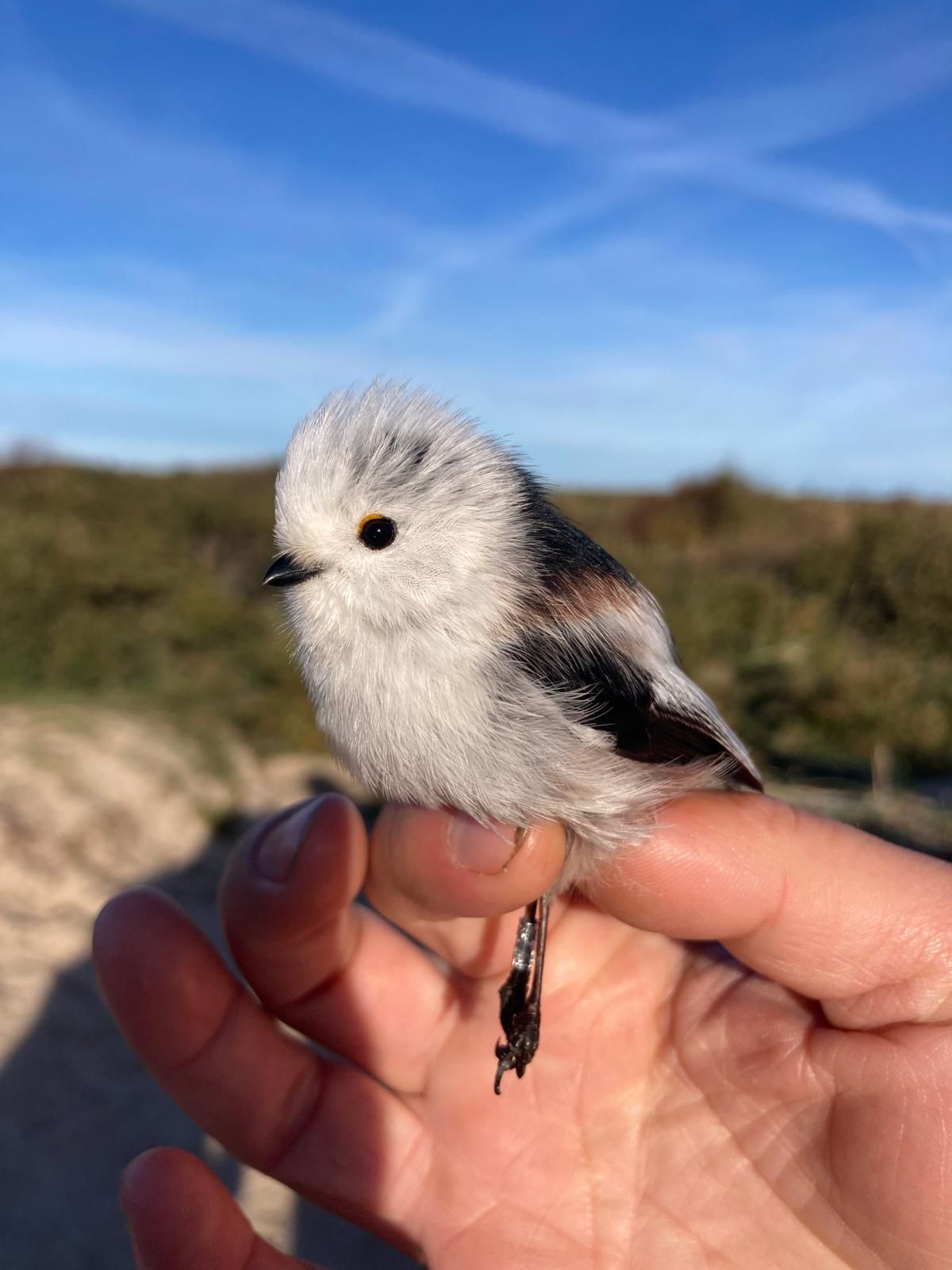
Halemejse
Later on, Florian and Miles joined us after observation to help on the closing round. We found in the net a firecrest (Rødtoppet fuglekonge!!), a very handsome female adult that was ringed here last autumn. At the end of the last round, we were joined by our new volunteer Mara, and it was very lovey to meet her and spend the rest of the day together.
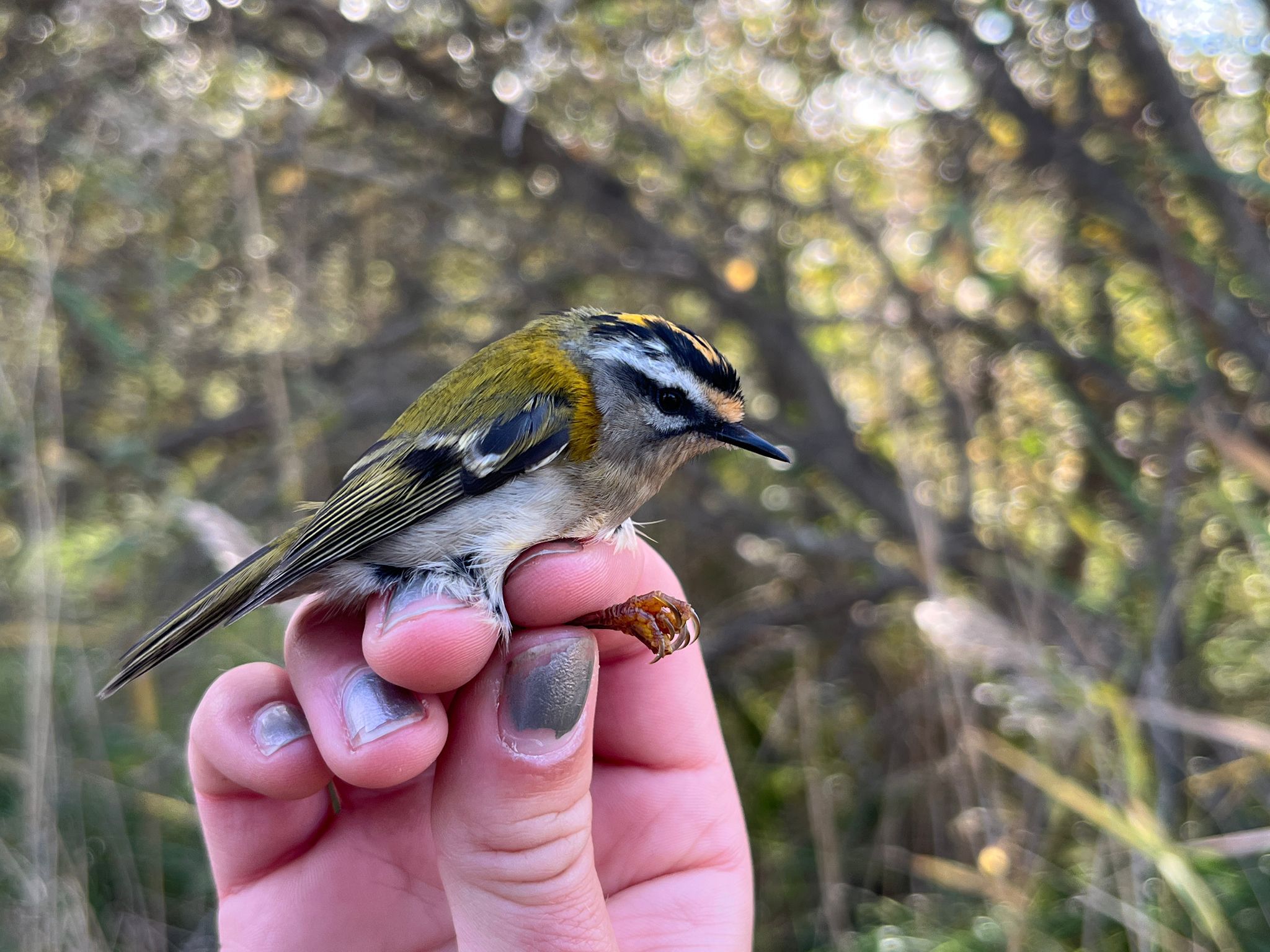
Rødtoppet fuglekonge
Miles and Florian went to World’s End III for migration count this morning, and weren’t expecting too much in the calm conditions. But it wasn’t too long before they called over the radio that a White-tailed eagle (Havørn) was resting on the beach. Soon after, they called out a yellow-billed loon (hvidnæbbet lom) in breeding plumage resting in Skagerrak. They were very pleased with this. They were also seeing larger flocks of Auks (Lomvie/alk) of 10 r 20 together, which is a nice sight.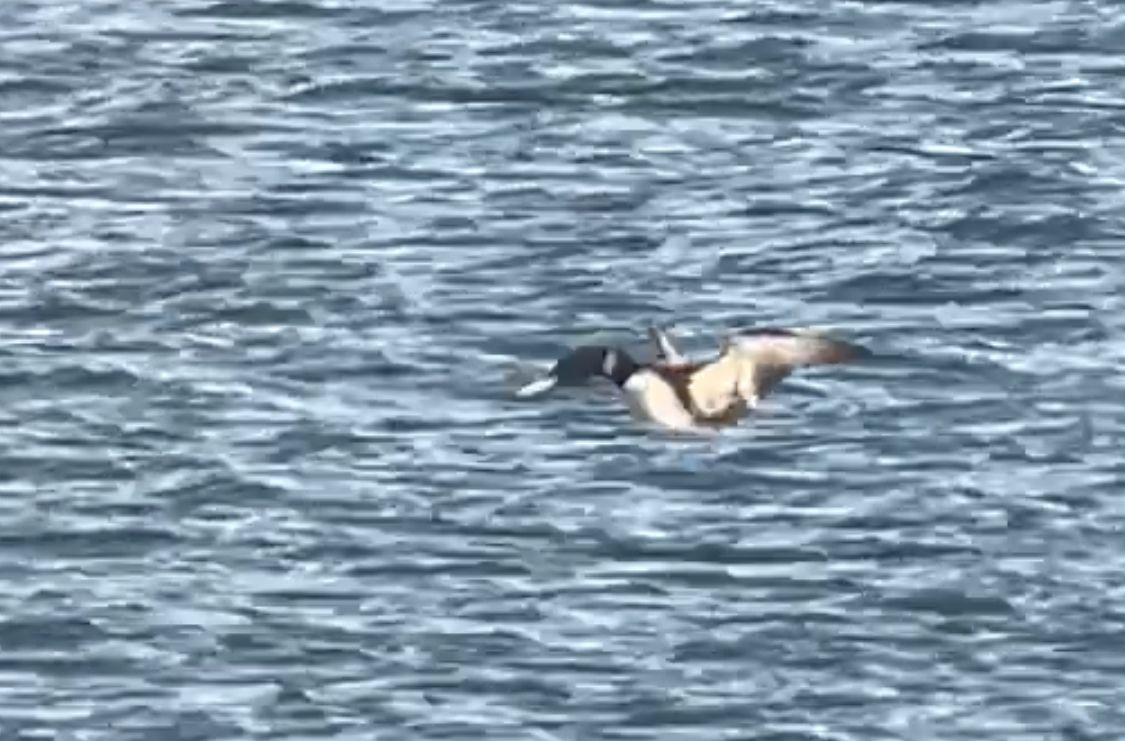
The highlight of today's obs: Yellow-billed Diver in breeding plumage!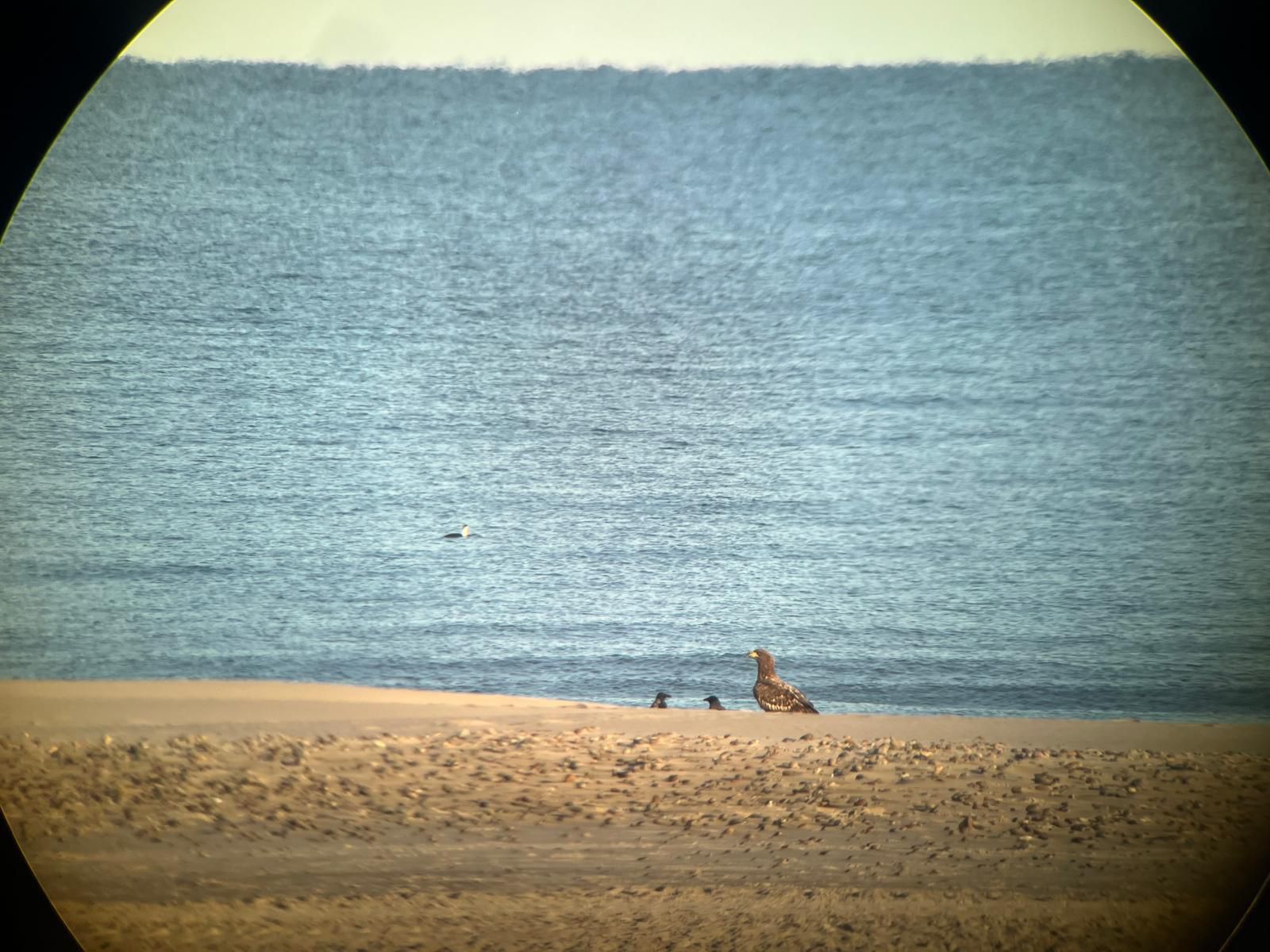
Havørn
After work we all went for a family swim and had lunch together. An afternoon of data entry went by very fast, and then we had a nice, tasty dinner cooked by Florian.
Final words from Gabriel: “Make sure to keep your hands warm. You don’t want them ending up like mine.”
Sydlig Halemejse 6
Nordlig Halemejse 1
Halemejse 14
Vindrossel 3
Solsort 1
Grønirisk 2
Musvit 6
Gærdesmutte 15
Rødhals 4
Grønsisken 1
Sortmejse 2
Lille Dompap 11
Stor Dompap 8
Dompap 4
Bogfinke 2
Munk 5
Kvækerfinke 6
Blåmejse 7
Træløber 5
Fuglekonge 19
Gransanger 3
(Retrap Rødtoppet Fuglekonge)
Total new birds: 126
Highlights from World's End III
Havørn 1
hvidnæbbet lom 1 ad.
Today's observations in DOFbasen can be seen here.
People: Gabriel Axelsson, Florian Hatt, Sarah Partridge, Amira Nuseibeh, Miles Scheuering, Michael Ancher, Simon S. Christiansen, Lisa Vergin, Mara Glane, and our guests Mette and Jesper.
The Shrimp Cake
Today was the first really nice, busy day for the migration count in quite a while. Miles and Florian headed out to Worlds End 3 where the north-westerly winds seemed to be pushing all the birds closer to the shore, leading to nice views of three Sooty Shearwaters (Sodfarvet Skråpe). Even the ringers at Kabeltromlen managed to see them pass by. There were also more Fulmars (Mallemuk) than usual, at least 500 over the morning, and both Arctic and Great Skuas (Kjoves) too! A highlight was also 8 Purple Sandpiper (Sortgrå ryle), a species which we have been seeing more and more in the last week, and we all love so much!
Observers counting lots of birds this morning!
Over at the ringing station at Kabeltromlen, we had a windy start to the morning, so we didn’t have most of the nets open at first but then opened more up as the morning went on and caught 57 new birds in the end. It was lovely to have a Norwegian photographer, Hilde, and her family, join us and take some photographs as part of her upcoming project focused on birds, bird ringing and current environmental issues (link to her website is here). We were also visited by Linda and Jeppe who hold a ringing licence so helped Sarah, Gabriel, Simon, Esben, Florian and I with the ringing this morning.
Although we didn’t catch any rare species today, it was nice to have so many retrapped birds (22 in total), including a gorgeous Crested Tit (Topmejse) which Sarah and I caught 10 days ago. Since then, it has increased in body fat but decreased in weight by 0.1g which I find quite confusing.
Once we got back to the lighthouse, Sarah, Florian, Miles, Esben and I had a refreshing dip in the sea, much to the shock of the many many tourists which were sat in their coats and woolly hats clutching hot drinks whilst we walked past them in just our swimsuits. The sun was out and the water was probably the warmest it has been since I arrived here in September.
This afternoon we said goodbye to Lars Bo and Esben who have helped us so much this week and I know we’re all extremely grateful for all the knowledge and funny stories they’ve shared with us! Lars Bo is a terrific ornithologist and specialist on Little Owls (Kirkeugle) in Denmark and has just yesterday been interviewed on TV about the project; you can find out more about it here!
Gabriel is sadly also leaving us tomorrow but it’s his birthday in a few days, so Miles and I baked him a secret surprise chocolate torte whilst he went out birding with Sarah and Florian for the quarterly waterbird counts. They visited Skarvsøen (Cormorant Lake), North Strand, and then did the final count from the top of the lighthouse at sunset. They did have to almost run up the 210 steps to make it before it got too dark to count birds! Their highlights from the waterbird counts were lots of Great Crested Grebes (Toppet Lappedykker) from Northstrand, some Purple Sandpipers (Sortgrå ryle) and a Great Grey Shrike (Stor Tornskade) on their bike ride between count locations!
Florian, Sarah and Gabriel completing the final waterbird count of the day, from the top of the lighthouse, as the sun sets.
After a delicious dinner of Chilli and homemade Cornbread made my Miles, Gabriel gave us an interesting presentation on the identification of Scotor (Melanitta) species. I definitely learnt a lot from it; I had no idea that there were 6 different species globally. We then surprised Gabriel with his birthday chocolate cake which we decorated with powdered sugar in the shape of a traditional Swedish Shrimp. We’ll all miss him so much, but we wish him lots of luck as he returns to Sweden to finish writing his master’s thesis on Hummingbirds and carry out lots more wildlife surveys this Autumn!
Chocolate Torte with a Shrimp decoration for Gabriel's birthday
Then, just as we sat down on the sofa finally ready to relax, Miles sent us a message saying that the Northern Lights were visible. We all sprinted outside as fast as we could and we could see the green glow, wow! As we watched it for a while, we listened to the tseep tseep calls of Redwings (Vindrossel) as they migrated above us under a sky full of stars. What a fantastic end to a great day!
Northern Lights / Aurora Borealis from the Lighthouse Garden
Ringing (Kabeltromlen):
Vindrossel 3
Sangdrossel 2
Grønirisk 2
Musvit 1
Gærdesmutte 12
Rødhals 3
Dompap 1
Stor Dompap 3
Lille Dompap 3
Kvækerfinke 10
Bogfinke 3
Blåmejse 3
Munk 2
Fuglekonge 9
Total: 54
Ringing (Jennes Sø):
Gærdesmutte 3
Rødhals 2
Fuglekonge 7
Sortmejse 1
Blåmejse 6
Musvit 2
Træløber 1
Grønirisk 1
Lille Gråsisken 11
Stor Dompap 2
Total new birds: 36
Highlights from Worlds End 3:
Sooty Shearwater (Sodfarvet Skråpe) 3
Fulmar (Mallemuk) 500+
Purple Sandpiper (Sortgrå ryle) 8
Today’s observations from the area can be found here
People: Gabriel Axelsson, Florian Hatt, Sarah Partridge, Amira Nuseibeh, Miles Scheuering, Michael Ancher, Simon S. Christiansen, Lars Bo Jacobsen, Esben Hansen, and our guests Linda and Jeppe.
Gulls Gulls Gulls
It has been quite windy the last few days, so there has not been ringing. This morning, the crew took a family outing to World’s End 3 for the migration count. There have not been a lot of particularly special species the last few days, but there has been decent movement of some species. There have been many Alcids (Alkefugle) and we have been getting large flocks of geese (gås sp.). The geese tend to arrive later in the morning, which is nice because numbers of other species have often dwindled by then. Today we had 117 Pink-footed Geese (Kortnæbbet Gås) and 165 Graylag Geese (Grågås), plus 88 unidentified gray geese (Grå Gås sp). The alcid total was over 200 birds, with most (180) being unidentified Guillemots/Razorbills (Lomvies/Alks), along with 17 Razorbills and 9 Guillemots. Many have been migrating far out and they are difficult to identify, but I plan to do my session on their identification, so hopefully that will help us.
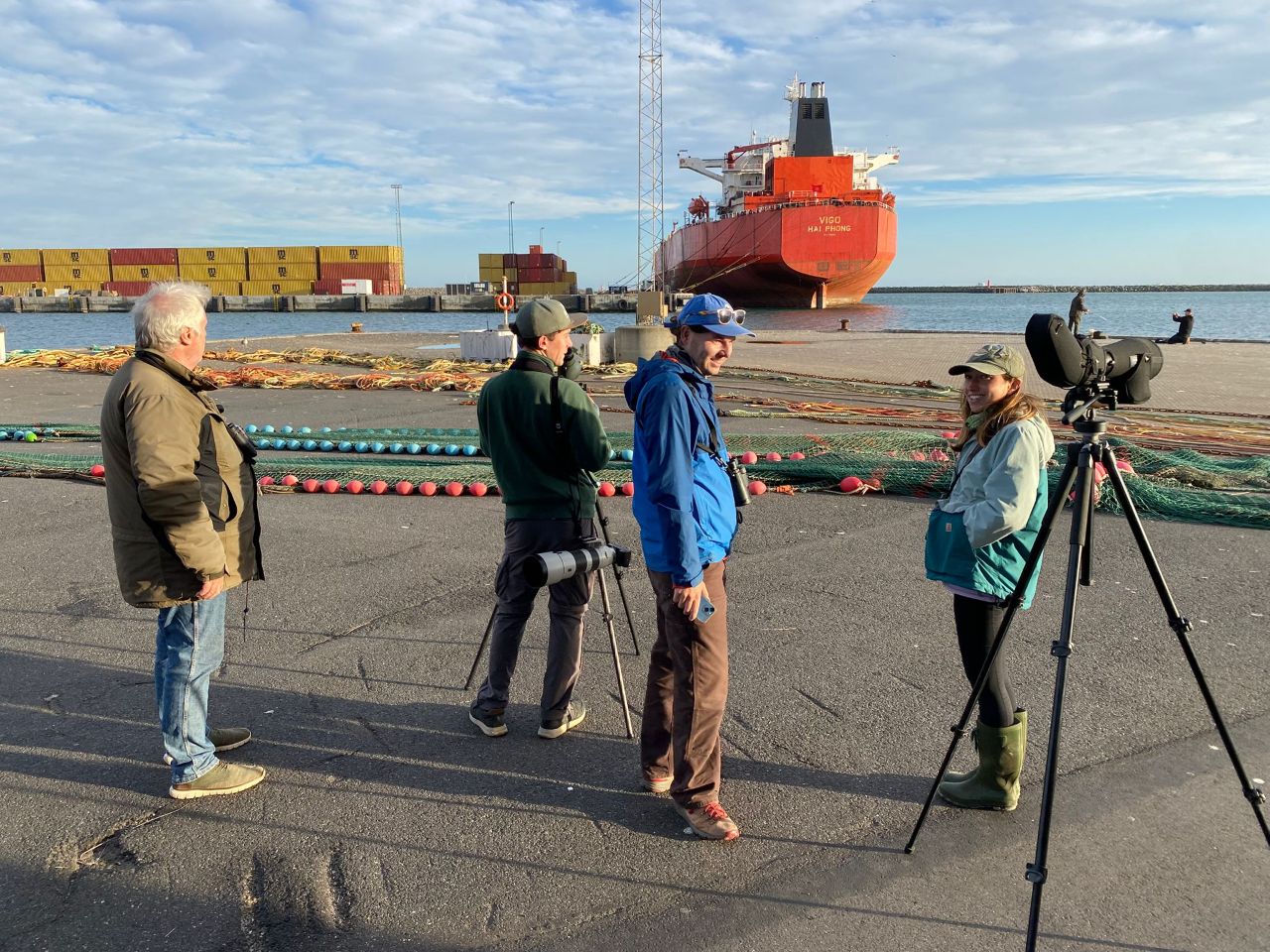
Hard at work counting gulls at the harbor. Photo by Gabriel
After returning from the count, Sarah cooked us a delicious lunch. Amira had returned early and had already finished most of the weekly cleaning, which was greatly appreciated and saved us all some time this afternoon! This weekend is Denmark’s national waterbird count (NOVANA), which we are participating in. It happens to coincide with eBird’s October Big Day, which is today! There are several sites we need to visit for the waterbird count, but today we got a ride from Lars Bo and birded the harbor. We mostly saw gulls (Måge sp.), including 324 European Herring Gulls (Sølvmåge) and 150 Great Black-backed Gulls (Svartbag), along with 396 Great Cormorants (Skarv) and 49 Common Eiders (Ederfugl).
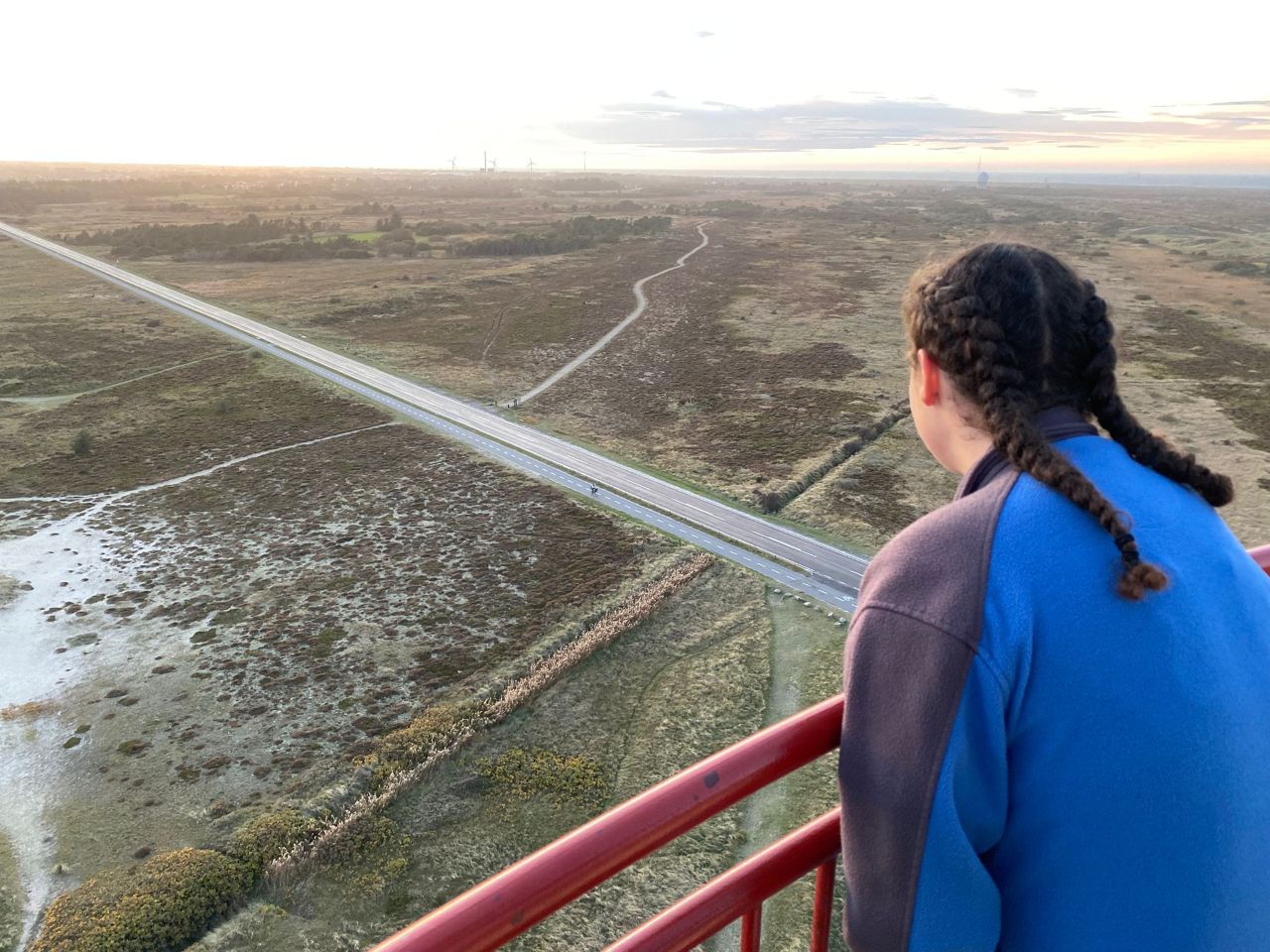
Amira checking on the tofu delivery from the lighthouse. Where is Miles? Photo by Gabriel
After counting the roosting gulls, Lars Bo took us to Lidl so we could pick up some groceries. Unfortunately, just as we were arriving back at the lighthouse, Sarah and I realized we had forgotten the tofu and rice noodles that Amira had specifically requested (and we had confirmed we would get) for tonight’s dinner. Sarah and I rushed back to Lidl on our bikes to collect these items in time for dinner. Sometimes just one trip to Lidl is not enough, even in a single day. Amira cooked us a delicious stir fry for dinner, and we discussed the use of “I love you” in platonic friendships.
Now, Gabriel, Esben, and Lars Bo are out night catching. Last night they failed to capture anything, although they did see a Jack Snipe (Enkeltbekkasin). Maybe tonight they will catch something good!
Ringing (Jennes Sø):
Eurasian Wren (Gærdesmutte) 4
European Robin (Rødhals) 1
Eurasian Blackbird (Solsort) 1
Common Chiffchaff (Gransanger) 1
Goldcrest (Fuglekonge) 3
Crested Tit (Topmejse) 1
Blue Tit (Blåmejse) 2
Great Tit (Musvit) 3
Eurasian Treecreeper (Træløber) 2
Lesser Redpoll (Lille Gråsisken) 2
Highlights from World’s End 3:
Pink-footed Goose (Kortnæbbet Gås) 117
Little Gull (Dværgmåge) 26
Horned Lark (Bjerglærke) 1
Today's observations in Dofbasen from observers in the area
People: Gabriel Axelsson, Florian Hatt, Sarah Partridge, Amira Nuseibeh, Miles Scheuering, Simon S. Christiansen, Lars Bo Jacobsen and Esben Hansen
